M L
Senior Lifestyles
A Morning Fatigue-Reduction Schedule That Works
The Secret To Making The Perfect Eco-friendly Iced Coffee
Older adults guide to retirement Living
Awesome Summer Events Lose Weight With Pilates Your 7-Day Kickstart Plan


Calm, Joy, & Peace
A GUIDE TO HEALTHY LIVING FOR MEN, WOMEN, CHILDREN AND SENIORS
Est 1992
MODERN HEALTH AND LIVING JUNE 2023 FREE PUBLICATION H

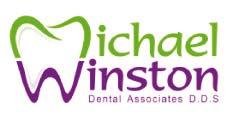
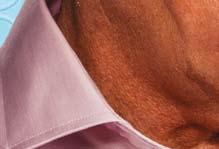
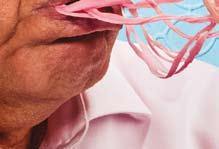
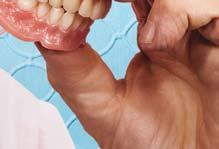






For more information, please visit teethinplace.com InPlace Comprehensive Treatment Options exclusively feature the LOCATOR ® Attachment and other products from ZEST Anchors LLC. Call today for a consultation. Never worry about your loose dentures again. Stop trying to hold your dentures in place with messy adhesives. InPlace™ will allow you to secure your teeth and say “goodbye” to adhesives forever. Visit our dental practice and discover how life-changing and affordable implant-retained overdentures can be. TIRED OF THE GOOEY MESS? There IS a better option. 1469 S. 70th St | West Allis, WI 53214 (414) 383-5833 wisconsinsmiles.com
Summer is here and our little family kicked it off with a run walk and a half marathon. That’s right, Brady’s first half marathon in the books. Taking 3rd overall with an elite time of 1 hour 55 minutes and 55.8 seconds to be exact. This qualified him for the NY Marathon, so I’d say that is a big accomplishment for a 17 year old. It’s time for my oldest to say goodbye to high school. Track season is over. I’m ready to wind down from all this and enjoy these awesome days of Summer.
June
Thank you so much for choosing our paper. We appreciate your input as well as the contributions from our friends in the health care field. Have a great June and stay healthy!Thanks to all our advertisers and readers! Stay healthy!
Brady class of 2023 Cedarburg Track and Field Athlete of the Year
Est 1992 M L MODERN HEALTH AND LIVING JUNE 2023 FREE PUBLICATION H A GUIDE TO HEALTHY LIVING FOR MEN, WOMEN, CHILDREN AND SENIORS Senior Lifestyles A Morning Fatigue-Reduction Schedule That Works The Secret To Making The Perfect Eco-friendly Iced Co�ee Awesome Summer Events Lose Weight With Pilates Your 7-Day Kickstart Plan Calm, Joy, & Peace Older adults guide to retirement Living
staff
design advertising
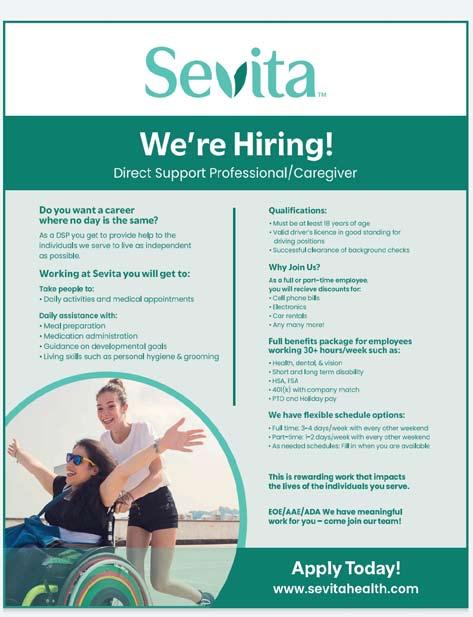
contributers contact
 Media Group Amanda Lewis Malberry Media Tom Delgado Barry Lewis
Media Group Amanda Lewis Malberry Media Tom Delgado Barry Lewis
The Ommani Center, Livestrong.com, Environmental Nutrition, Nutrition Action Health Letter, Columbia/St. Mary’s, Ascension, Eye Care Specialists, Aurora, Alexian, Eye Physician Associates, Brothers Village, Ye Olde Pharmacy, NIH, Jensen Health and Energy, Foot Solutions, Allergy and Asthma Centers, Tudor Oaks, Active Care Rehab, Greensquare Center for the Healing Arts, Midwest Audiology, Integrative Family Wellness Center, Universal Services, American Camp Association and Home Instead
For information on advertising or to submit articles call, 414-659-6705 or 608-237-6000, or email mhl@wi.rr.com.
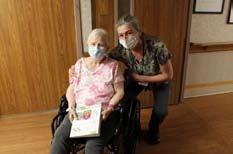

Subscriptions are $20 per year. Thanks for reading MHL.
disclaimer
MHL is published on the first of each month . The articles in this publication are in no way intended to replace the knowledge or diagnosis of your doctor. We advise seeing a physician whenever a health problem arises requiring an expert’s care.
thanks
Special Thanks! To all the local professionals that provide us with articles containing new information and keeping all our readers informed of the latest in healthy living.

images


Lewis Media Group | www.modernhealthandliving.com
 Lewis
Lewis
publishers editor graphic
MHL STAFF
June 2023 EDITION June 2023 MHL 3
distribution manager travel editor founder Note
Jerry Kornowski Marlys Metzger Barry Lewis 2023 Grow your career with VMP! - Infection Preventionist - Registered Nurse - Licensed Practical Nurse - Certified Nursing Assistant - Respiratory Therapist - Physical Therapist - Resident Assistant Visit www.vmpcares.com/careers for more information or scan the QR code to apply with us today!
123RF.com, Istock.com WE ARE HIRING! To learn more about our community call (414) 607-4100 or visit us online!
Amanda Lewis
Editor’s
Summertime weather should make it easy for you to make a few healthful changes in your life. More than ever, people are becoming health conscious. Healthier options are now available in food, housing, gardening, transportation and even clothing. I’m meeting quite a few people who have made good changes in their diets and lifestyles and only a few years ago the very same people were resisting the small changes they now embrace. Avocado toast for breakfast on whole wheat bread, less meat and taking walks instead of sitting in front of a television. Movement is key to a healthy body. And in this edition, we have a great mix of articles to help you turn this summer into a great 3 months. We are here to help you get healthy. We carefully consider the articles we publish and we cover a variety of health related issues in an effort to help you learn about the choices you can make about your health.
I have to comment on my support for a special charity The Wisconsin Breast Cancer Showhouse which I am on the committee for our wonderful event June 9 to help raise money for Breast & Prostate Cancer Research. Thanks again to MKE Lifestyles for choosing my room to feature in their new June 2023 edition of their favorite residences from all the years. So CHEERS TO 25 YEARS!...hope to see you there!

Join our team of holistic health practitioners



We are looking for strategic thinkers, team players and leaders who align with our purpose of improving the health and wellbeing of those we serve
Our work focuses on crea ng meaningful connec ons with each of our clients, helping them to move to ward a healthier lifestyle. We assist each individual’s journey by helping to uncover root causes of their health concerns through holis c natural health and wellness advocacy


If our purpose resonates with you, we invite you to explore career opportuni es and apply today.
*Full me or part me (at least three days a week as client load builds). $35/hr, up to $40hr maximum. Qualifica ons: Must have a passion for natural health. Background in Nutri on preferred Willing to train the right candidate

MENOMONEE FALLS AND NEW BERLIN
UNDERSTAND THAT HEALTH IS PERSONAL SEE WEBSITE TOTALHEALTHINC.COM FOR MORE INFORMATION CLINIC@TOTALHEALTHINC.COM Send re sume to: Health Employment June 2023 MHL �
WHO


June is National Migraine and Headache Awareness Month
Migraine Attack Triggers
What You Can Do To Avoid Them
By Gable Holderness, MSN, APNP

Knowledge is power! Understanding the potential triggers that can cause a migraine attack is an important step in managing and reducing the frequency and severity of attacks.What triggers a migraine attack for one person may not trigger a migraine attack for another. I have put together a list of the most common migraine triggers and what you can do to minimize their impact.
STRESS
Stress is one of the most common, if not the most common trigger for migraine. Stress may trigger a migraine attack, having chronic migraine creates more stress, and the cycle continues. Managing stress through relaxation techniques such as yoga, meditation, deep breathing techniques, and getting regular exercise can help reduce stress and, in turn, the frequency and severity of migraine.
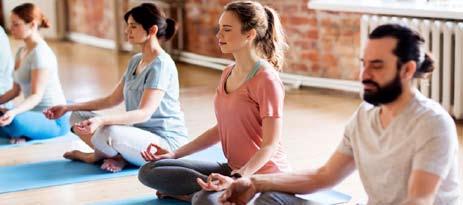
HORMONAL CHANGES
Hormonal changes such as those that occur during menstruation, pregnancy or menopause can also trigger migraine. While hormone changes are primarily out of our control, women who suffer from migraine attacks are often advised to track their menstrual cycle to identify any patterns in headache frequency.
SLEEP PATTERNS
Disruptions to sleep patterns, such as insomnia or oversleeping, can trigger migraine. Getting regular, restful sleep is important for preventing headaches. Set a consistent bedtime routine that allows sufficient time to sleep. Create a sleep environment that is dark, quiet, cool and comfortable. Avoid caffeine, alcohol, and meals too close to bedtime.
FOODS AND DRINKS
Certain food and drink, such as processed or aged cheeses, foods containing MSG, alcohol, caffeine, and artificial sweeteners may trigger migraine. Keeping a food diary can be a helpful tool. Identify any problematic food or drink to avoid in the future.
SKIPPED MEALS
Skipping meals, fasting, or going for long periods of time without eating or drinking water, can trigger migraine. Eating regularly, maintaining a healthy diet, and staying hydrated can help to prevent headaches.
SENSORY OVERLOAD
Sensory triggers, such as bright lights, loud noises or strong odors can also trigger migraine. To minimizing feeling overloaded, wear sunglasses outside or blue light filtering glasses when looking at screens indoors, use ear plugs or noisecancelling headphones when exposed to loud noise, and skip the strong perfume and scented laundry detergent.
WEATHER CHANGES
Changes in barometric pressure, temperature and humidity can trigger migraine. We can’t control if it snows, rains or if the temperature rises or falls. Keep an eye on the weather forecast so you can take extra precautions to attempt to anticipate barometric pressure changes. During these times, pay special attention to managing stress, hydration levels, and keep abortive (as needed) medications handy.
MEDICATIONS
Some medications, such as birth control, triptan medications or medications containing caffeine can trigger migraine. Other medications such as Tylenol and Ibuprofen can cause medication adaptation headache (otherwise known as rebound headache) due to the frequency of use. Talk to your medical provider about any, and all medications (meaning both prescription and over the counter medications) you are taking to see if they may be contributing to your headaches.In conclusion, there are many triggers that can cause migraine. Keeping a headache diary can help you identify your individual triggers. Sharing your headache diary with your medical provider is a valuable contribution to developing a plan to manage your migraine attacks. By understanding your triggers and taking steps to minimize their impact, you can take control and live a productive and fulfilling life!
Mind+ Neurology, a specialized headache and migraine clinic, offers walk-in Urgent Care for immediate rescue from severe migraine attacks. The newly built clinic is located at 12200 Corporate Parkway, Suite 400, Mequon, WI 53092. As an independent practice, no referral is needed. Mind+ Neurology is accepting new patients. Go to mindplusclinic.com to schedule an appointment today!
June 2023 MHL �
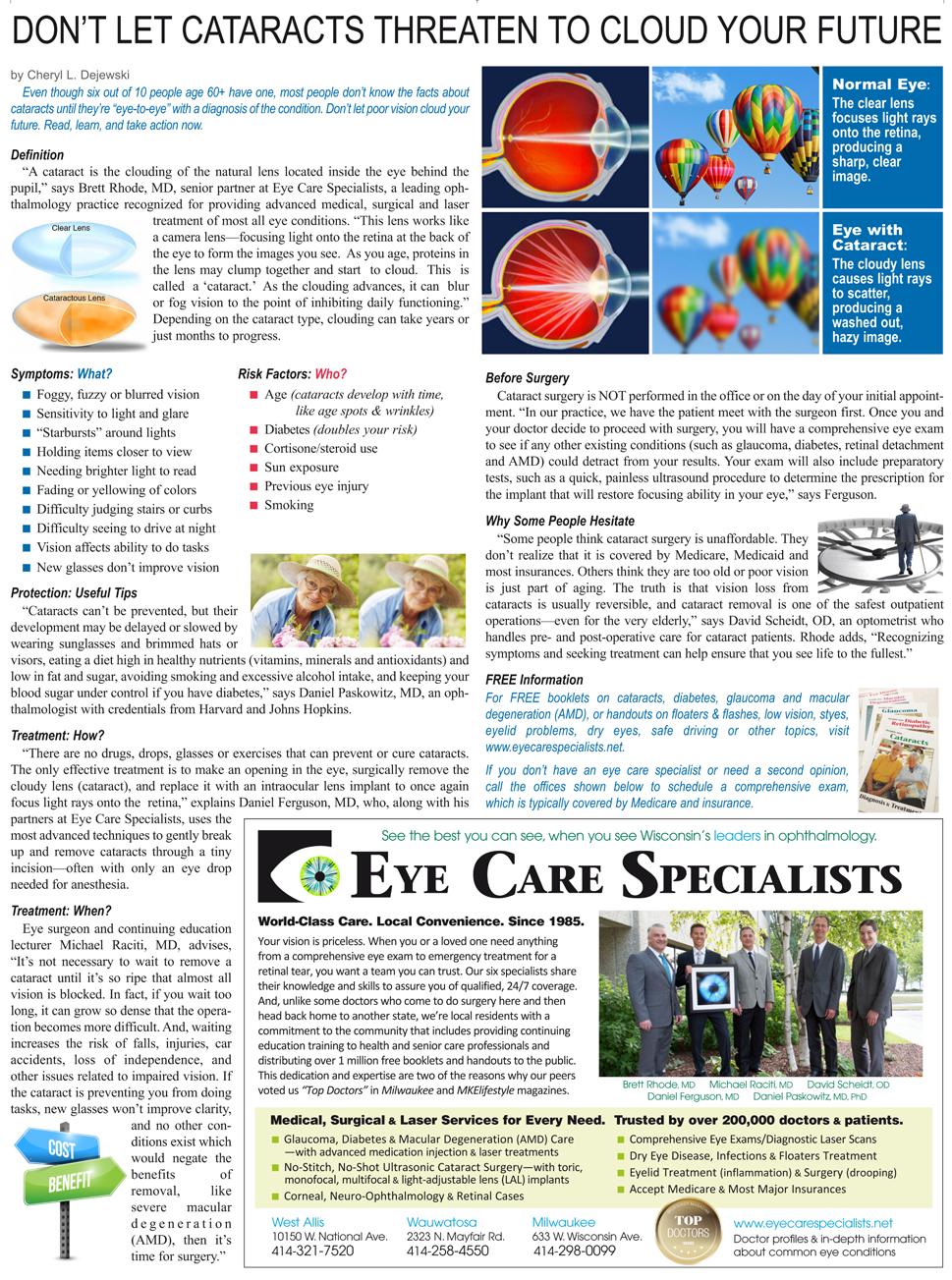
Eye MDs review cataract treatment process
By Cheryl L. Dejewski

An accompanying article in this month’s issue looks at the causes, symptoms and risks of cataracts. This story examines the treatment process.

Why you need a lens implant
“During cataract surgery, once the cloudy lens (about the size of an aspirin) is removed, an artificial lens implant (IOL) needs to be placed permanently inside the eye to restore focusing ability, peripheral (side) vision, and depth perception. ‘Monofocal’ IOLs are like miniature internal contact lenses set for a single prescription power—usually to provide clear vision in the distance for driving, watching TV, and other tasks. Most patients with these lenses still need reading glasses or bifocals. ‘Advanced technology’ IOLs reduce dependence on glasses by adjusting for astigmatism and/or providing multiple focusing zones. Your surgeon should help you determine which type of IOL is best for your eye, budget and lifestyle. They should never make you feel pressured. If they do, seek a second opinion,” says Brett Rhode, MD, an eye surgeon with thousands of cases under his surgical cap.
How the surgeon prepares
“We take the results of your pre-operative tests and enter information regarding the length of the eye and curvature of the cornea into a special computer that calculates which prescription IOL would best restore your vision to precataract levels. We then customize the type of implant and surgical technique to fit your needs—taking into consideration overall health, any diabetic or retinal problems, lifestyle, and other factors,” says Daniel Ferguson, ophthalmologist and partner at Eye Care Specialists. Fellow partner and skilled surgeon Daniel Paskowitz, MD, PhD, adds, “We never lose sight of the fact that even though we have performed tens of thousands of cataract procedures, each patient is unique and must be treated as so.”
What happens during surgery?
“Cataract surgery is performed on an outpatient basis using local anesthesia (often just drops to numb the eye). Typically, a no-stitch, self-sealing microincision is made to remove the cataract and insert the lens implant. Utilizing these advanced techniques, the procedure itself usually takes only about 10-15 minutes and total time at the outpatient surgery center is about 2-3 hours,” says Michael Raciti, MD, an eye care specialist who conducts continuing education lectures for peers.
What happens after surgery?
“After surgery, patients go home to resume most activities within hours, and their vision noticeably improves within days. Most people are so pleased with seeing things brighter and clearer, that they can’t wait to have their other eye done,” notes Paskowitz.
Six reasons to consider having cataract surgery

1. Vision improvement can enhance quality of life (ability to read, write, watch TV, perform chores and hobbies, etc.) and reduce psychological distress (worry and frustration). “Removing cloudy cataracts can also increase the amount of light and color which enters the eye, thus positively impacting cortisol, melatonin, and mood levels,” states Brett Rhode, MD.
2. “In one study, people who had their cataracts removed and replaced with implants had half the car accident risk of those who didn’t have surgery,” cites Daniel Ferguson, MD.
3. You’ll decrease your risk of falling and hip fractures,” says
Vision>>page 47 June 2023 MHL �
June is “National Cataract Awareness Month”
Heading Off Headaches: Diet And Lifestyle May Help…Or Not
 By Elizabeth M. Ward, M.S., R.D. For Environmental Nutrition
By Elizabeth M. Ward, M.S., R.D. For Environmental Nutrition
Who among us is headache-free?
Precious few. Thankfully, most headaches are minor irritations, products of a lousy day, eyestrain, fatigue or other temporary stress that fades with relaxation or pain relievers.

For 45 million Americans, however, recurring headaches are a major pain, costing the economy up to $50 billion annually in absenteeism and medical expenses, according to the National Headache Foundation (NHF). The good news: If you’re prone to frequent headaches, changing your lifestyle may help. Here’s the heads-up:

What’s Your Type? There are literally hundreds of kinds of headaches, but
here are the most likely to cause grief:
Tension headaches, by far the most common, are marked by steady mild or moderate pain, with tightness and pressure in the head and neck area. Most adults get occasional tension headaches that persist from a couple of hours to a few days.
Cluster headaches arrive with a specific calling card—piercing pain on one side of the head, often around or behind one eye. Lasting up to three hours, cluster headaches can strike once a day or several times daily for weeks or months, then disappear for longer. They are not common, plaguing about one million—mostly men—but experts characterize them as the most excruciating kind of headache.
Migraines are a recurrent nightmare for an estimated 26 million Americans. For sufferers—so-called “migraineurs”—the majority of them women, these headaches can be debilitating, interfering with even the most routine activities for hours to days.
TheMadness of Migraines. The typical migraine may start as a dull ache, but eventually escalates into pulsating pain often accompanied by hypersensitivity to light and noise, nausea and sometimes even vomiting. Some people experience visual disturbances at the onset of a migraine. This prelude, or “aura,” fades as the pain intensifies.
Migraines were once thought to stem from increased blood flow. But scientists now believe they are neurological in origin, resulting from reduced levels of serotonin (a brain chemical that dulls the feeling of pain) and inflames blood vessels and nerves around the brain. So instead of increased blood flow causing a migraine, it’s actually the migraine that probably causes the change in blood flow.
Emotional stress, anxiety, glaring lights, too much or too little sleep, fluctuating hormones, diet, cigarette smoke and changes in barometric pressure or altitude can all start a migraine in motion. Even simple anticipating the next headache can become the stress that generates it.
Hormones and Headaches. Changing hormone levels trigger migraine in some women, making pregnancy, lactation, menstruation and possibly menopause times of more intense and frequent headaches. Oral contraceptives and hormone replacement therapy can increase migraines too. About 75% of women migraineurs can link headaches each month to their menstrual cycles. That begs

10 MHL June 2023 The CapTel® Captioned Telephone shows word-for-word captions of everything a caller says, letting you read anything you cannot hear over the phone. CapTel is a NO-COST, federally funded technology available under the Americans with Disabilities Act To qualify, users need: • Hearing loss • Internet connection • Landline telephone service FEDERAL LAW PROHIBITS ANYONE BUT REGISTERED USERS WITH HEARING LOSS FROM USING INTERNET PROTOCOL (IP) CAPTIONED TELEPHONES WITH THE CAPTIONS TURNED ON. Advanced speech recognition software is used to process calls, and, in certain circumstances, a live communications assistant may be included on the call. There is a cost for each minute of captions generated, paid from a federally administered fund. No cost is passed on to the CapTel user for using the service. CapTel captioning service is intended exclusively for individuals with hearing loss. CapTel® is a registered trademark of Ultratec, Inc. The Bluetooth® word mark and logos are registered trademarks owned by Bluetooth SIG, Inc. and any use of such marks by Ultratec, Inc. is under license. (v1.7 01-23) Can’t Hear on the Phone? Get a NO-COST CapTel Captioned Telephone Several phones to choose fromfor landlines, Internet phone, or mobile 800-233-9130 CapTel.com Migraine>>page 41
June is National Migraine and Headache Awareness Month
Summertime is Funtime at Road America

Road America
The 2023 season kicks off this Summer. Located in Wisconsin’s scenic Kettle Moraine, Elkhart Lakes’s Road America Inc. is one of the world’s fastest racing tracks. Road America has fun events coming up for all ages. Get to the track!
NTT INDYCAR SERIES Sonsio Grand Prix Presented by AMR


June 15-18,
2023
The NTT INDYCAR SERIES Sonsio Grand Prix presented by American Medical Response takes center stage at Road America June 15-18, 2023, as an international lineup of drivers will have their chance to battle it out for glory on one of the world’s most majestic road courses.
The NTT INDYCAR SERIES is North America’s premier open-wheel series, with athletes representing over 11 different countries around the world. The diverse schedule is made up of superspeedways, short ovals, road courses, and street courses that put athletes physical and mental strength to the test reaching speeds up to 240 mph.

In addition, several iconic machines from Vintage Indy™ will be featured at the event, ranging from the classic to several modern Indy racers. Spectators will be able to get up close and personal with these legendary machines, and this special feature is sure to be an exciting experience for any racing fan, as they get to witness these cars in action during special parade laps and see first-hand the history and legacy of Indy racing. New this season is the opportunity to upgrade admission tickets to include access to the VIP Tower suites. The VIP Tower is located right at the Start/Finish line on the front straight across from the Main Paddock. Suites are furnished, climate-controlled, staffed with an attendant, and have restrooms conveniently located on the same floor. Two high-definition screens feature timing and scoring and a live feed of the races.
WeatherTech Chicago Region SCCA June Sprints June 23-25, 2023
The WeatherTech Chicago Region SCCA June Sprints return to Road America June 23-25, 2023. The June Sprints have been held every year at Road America since 1956. The 68th WeatherTech® Chicago Region SCCA June Sprints at Road America will feature everything from showroom stock to highly modified purpose-built race cars from eight distinct race groups. With Road America’s park-like setting, trackside viewing, up-close access to drivers and teams, and legendary cuisine appealing to drivers and fans alike, it’s no wonder the June Sprints remains one of the nation’s premier amateur sports car racing events.
The June Sprints race weekend in beautiful Elkhart Lake, Wisconsin features affordable fun for families and racing enthusiasts alike. Make it a weekend of outdoor enjoyment by camping on-site on one of Road America’s 1,000+ campsites or in a fully furnished on-site cabin. Children 16 and under receive free general admission with a paying adult to all Road America season race events.
Veterans, Active Military, Reserves, Veterans and Retired Members with ID can also enjoy the WeatherTech Chicago Region SCCA June Sprints for free. Visit the Road America Ticket Promotions page for full details. Learn more about this event and what all the upgrades includes at www.ROADAMERICA.COM.

FAST, FAMILY FUN
YOUTH AGES 16 & UNDER ENTER FREE WITH PAYING ADULT Elkhart Lake, WI 800-365-7223 RoadAmerica.com
AT AMERICA'S NATIONAL PARK OF SPEED! Bring the entire family out to Elkhart Lake's Road America for racing, camping, go-karting and to enjoy the Bank First Family Fun Zone. Official Vehicle of Road America ON-SITE CAMPING • PARKING • CONCESSIONS
June 2023 MHL 11 Summer Events
If Your Yard Could Talk: 6 Things It Wants You to Know

Backyarding is the trend born out of necessity during the pandemic as people moved indoor activities including working, entertaining, exercising and vacationing into their family backyards. Homeowners invested in their outdoor areas in record amounts, spending time, sweat quity and money to ensure they utilized every square inch of their yards for expanded living space and an oasis for relaxation and stress relief.
According to the recent “Yards Study” Harris Poll, more than two-thirds of Americans who have a yard (69 percent) say doing yard work – either maintaining it or adding/updating features – is one of the ways they like to de-stress these
days. This is especially true among parents of kids under 18.
“Over the last few years, families have used their yards more than ever before, and the Harris Poll indicates a vast majority of those who have a yard plan to invest even more in their yard in the coming year,” says Kris Kiser, president & CEO of the TurfMutt Foundation. “Since backyarding is now part of our everyday lives, we have some advice – from the yard, if you will – for families to take into account this spring.”
Plant more, early and often. Adding trees, bushes, grass and flowering plants is a good yard investment, but they often take time to grow. Plant as early as recommended to enjoy the benefits faster. Remember the Golden Rule of backyarding: “right plant, right place.” Location, maintenance, sunlight and watering needs should all be considered, as well as your climate zone.
You work on me, and I work for you. The more time you spend in your yard, the more health and well-being benefits gained. Backyarding means exploring, appreciating and spending time in your own personal patch of nature, which reduces stress, improves memory, boosts heart health, and offers a host of other benefits for our minds and bodies.

I have environmental superpowers. Family yards are environmental superheroes – producing oxygen, absorbing carbon, and capturing and filtering rainwater. By becoming a steward of your living landscapes, you can have a positive impact on our environment and help mitigate the effects of climate change on a micro level.
You’re not the only one who depends on me. Your yard is an important part of the connected ecosystem, and adding flowering plants, trees and shrubs give wildlife and pollinators food and shelter. Check your climate zone for landscaping options that support the birds, bees, butterflies and other wildlife that call your neighborhood home.
Please care for me properly. Only water when necessary. Over-watered grass gets lazy, growing roots in a horizontal pattern. With less water, grass sends its roots deeper – vertically – seeking water. By working harder, grass does a better job of sequestering carbon and releasing oxygen. Install watering solutions – like smart controllers on irrigation systems – that helps conserve water while maintaining your backyard.
Additionally, find the just-right length to cut your turfgrass (typically between
Backyarding
Yard>>page 47 REAL HEALTH & FITNESS W61 N513 Washington Avenue Cedarburg, WI 53012
Summer Heat Takes Over Light Activities to Improve Health
With pleasant Summer temperatures comes the urge to become more active. Before summer heat takes over, encourage your senior to engage in light physical activity, such as walking.
Regular walking, a favorite exercise for seniors, is one of the most effective forms of activity that delivers substantial health benefits and improves heart health, according to the American Heart Association.


Walking is easy to start and continue, and it has the lowest dropout rate of any physical activity. The American Heart Association even offers Walking Clubs, which allow participants to connect with others who share similar goals, lifestyles, schedules and hobbies – and do it for free.
The recommended level of moderate aerobic exercise is 150 minutes per week; according to an AHA survey, only 15 percent of American adults reach that goal. Walking for as little as 30 minutes a day will help your senior loved one improve circulation, lower cholesterol and blood pressure, and promote weight loss.
To make walking even more enjoyable for your senior loved one, try this light exercise today. The Leg Curl is designed to help make walking and climbing stairs easier for a senior. Here’s what to do:
01 Stand behind a sturdy chair, holding on for balance. Lift one leg straight back without bending the knee or pointing the toes. Breathe in slowly.
02 Breathe out, slowly bringing the heel up toward the buttocks as far as possible.
03 Bend only from the knee, keeping hips still. The leg you are standing on should be slightly bent.
04 Hold position for 1 second.
05 Breathe in, slowly lowering the foot to the floor.
06. Repeat 10 – 15 times.
07 Repeat 10 – 15 times with the other leg.
08 Repeat 10 – 15 more times with each leg.
Consider getting a pedometer for your senior. Encourage them to clip it to their belt in the morning and wear it all day long. Wearing a pedometer is a simple way to keep track of daily steps. They may be surprised at how many steps they take each day while walking, running an errand, and even doing chores around the house. Have your loved one keep a daily log of their steps and motivate them to set small fitness goals each week.
To incorporate light physical activity such as walking into your senior loved one’s lifestyle, consider enlisting a Home Instead CAREGiver, who can serve as a walking companion or transport your senior loved one to the mall, local museum or a community garden for some scenic exercise.

For more information about helping seniors lead more active and healthy lives, please call Home Instead Senior Care of Milwaukee at (414) 882-5464, or Like us on Facebook. You can also find more information about physical activities for seniors on Caregiverstress.com.

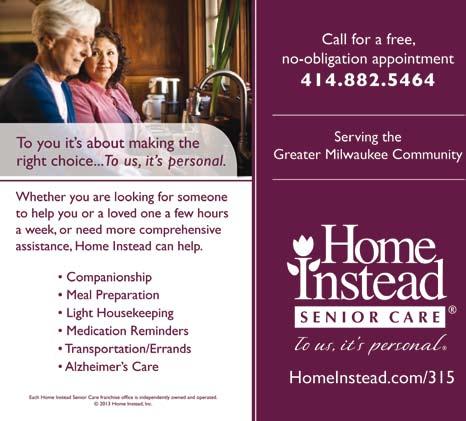
June 2023 MHL 13
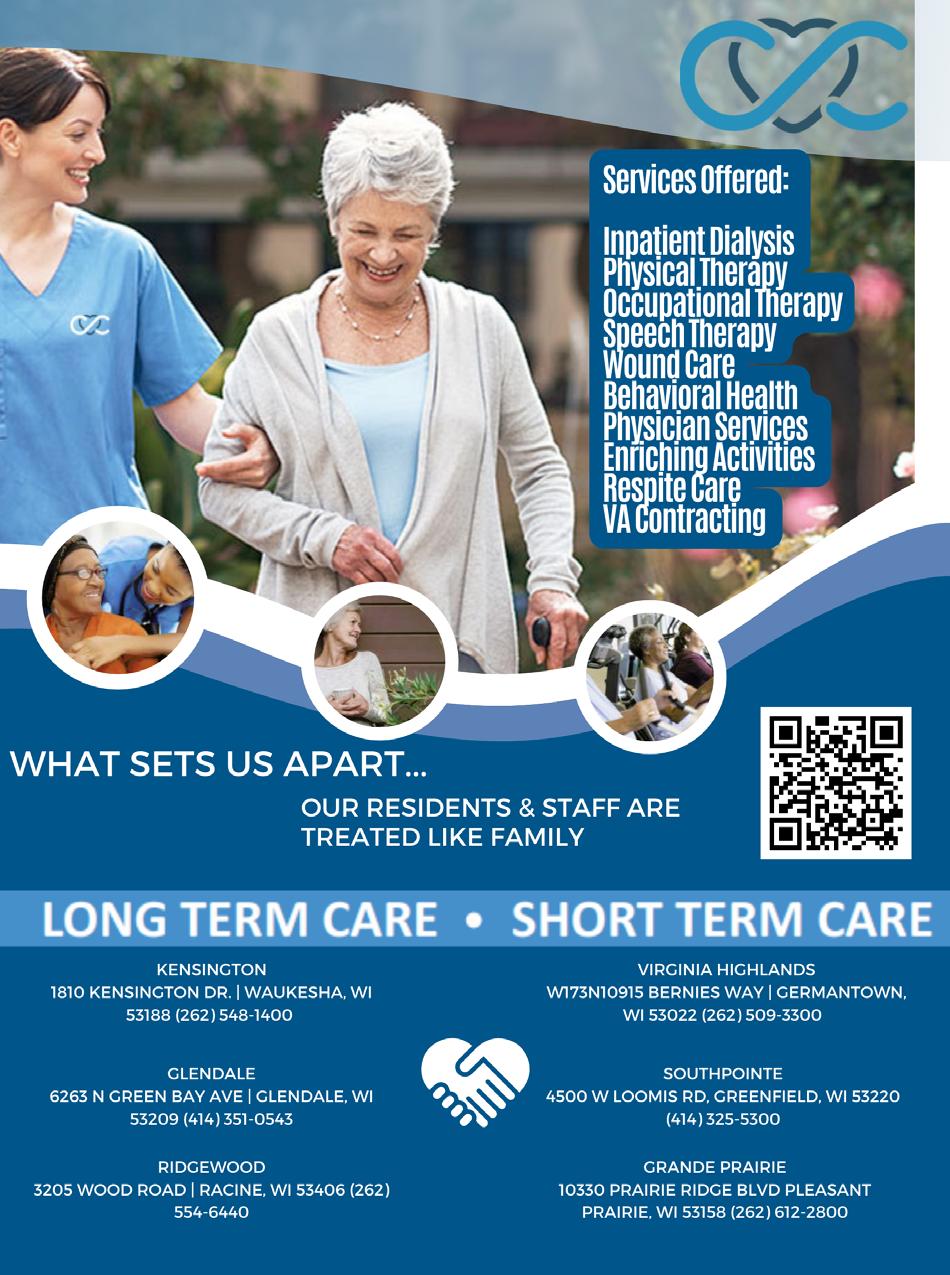
Want to Lose Weight With Pilates? Here’s Your 7-day Kickstart Plan
By Marygrace Taylor
Aregular Pilates practice can help you get stronger and leaner, not to mention improve your flexibility. But if you’ve never tried it before, getting started might feel a little intimidating. That’s where this beginner-friendly, seven-day kickstart plan comes in.
What Is Pilates?
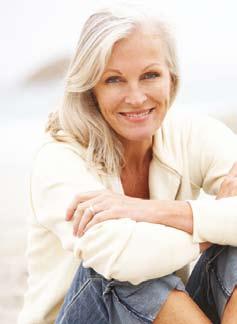
Developed in the early 20th century by physical trainer Joseph Pilates, Pilates was first designed with dancers in mind.
The low-impact movements, which center largely on core strength, “[use] eccentric exercises to tone and define muscles with the arms becoming more toned, the abs becoming more defined and the butt being lifted,” explains Heather Andersen, owner of New York Pilates in Manhattan. “You’ll also see an improvement in posture, flexibility, balance and coordination.”
And that’s just the beginning of the list of Pilates benefits!
Most Pilates instructors, including Andersen, agree that beginners can learn a lot from hands-on instruction at a local studio. But if you want to get your bearings at home first — or just give Pilates a try to see if it’s for you — this seven-day kickstart plan is a great place to get started. Created by Andersen, it’ll introduce you to the basics of Pilates and help you get leaner and more toned in just one week.
As for weight loss? Pilates workouts aren’t designed to torch major calories, so you might not see a change on the scale. But rest assured that with a little persistence, your efforts will pay off.
“A healthy diet and regular Pilates practice can help people lose weight, but most importantly, it will help them tone and define their body and help to increase their confidence,” Andersen
says. (Take a look at how pilates compares to yoga for weight loss.)
Ready to get started? Let’s go.
What You’ll Need
Andersen’s seven-day plan was designed with Pilates newbies in mind. Consisting of just a handful of foundational moves, you’ll make progress each day by adding repetitions and variations to increase the difficulty.
No special equipment is needed, but a yoga mat or a towel will make the exercises more comfortable.
We Recommend
Home fitness classes and Pilates workouts , online classes at home . An overweight woman exercises under the supervision of a personal trainer.
Fitness
What Are the Best Exercises for Saggy Belly Fat?

Woman doing sit-ups in exercise class
Fitness
The Muscles Targeted By Crunches woman doing criss cross ab exercise as part of Pilates core workout series abs challenge
Fitness
A 10-Minute Pilates-Inspired Ab Workout for a Sculpted Core
The Moves
Articulated Bridges
Lie on your back with your knees bent with your arms by your side and your feet flat on the floor.
Push your pelvis up into a bridge pose, making sure your ribcage is closed and your tailbone is tucked at the top.

Hold for 2-3 seconds.
Classic Ab Curls
Lie on your back with your knees bent with your hands behind your head and your feet flat on the floor.
Curl up until you feel your abs engage, then release your head and return
Pilates>>page 44
incur supplement and Their $150 Advantage save nearly for the product so working insurance and they best term would her similar she representative, care suggestions to mail of do situation, current and
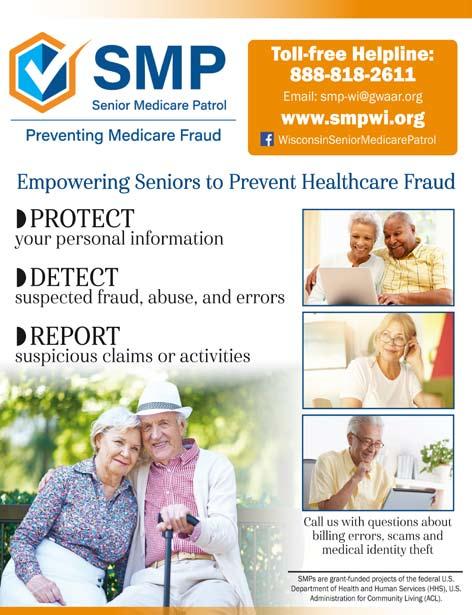
including financial your protecti
Sherry Baggerley Call (262) 523-1440 today. Call (262)844-4752 today. June 2023 MHL 1� Fitness




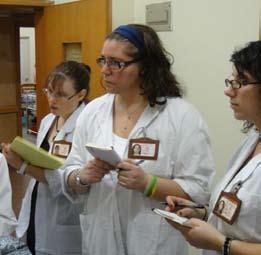





the Well Being
Earn an accredited Master’s Degree in Oriental Medicine wth a Bachelor’s in Nutrition or a Master’s Certification in Acupuncture. Online, Evening and Weekend Classes Available “An Ancient Medicine For Modern Times” 6232 Bankers Road 6232 Bankers Road, Racine, Wisconsin 53403 | 8950 Gross Point Road, Skokie Illinois 60077 Approved by the Illinois Board of Higher Education and the Wisconsin Educational Approval Program. Accredited by the Accreditation Commission for Acupuncture and Oriental Medicine. Become an Acupuncturist in 2 1/2 years *Financial aide available for those who qualify Lifestyle 16 MHL June 2023
Dr. William
Dunbar,
President of Midwest College
THE SECRET TO MAKING THE PERFECT Eco-friendly ICED COFFEE
Insanely delicious and 100% foolproof, the classic summer beverage starts with Steeped Coffee’s innovative EcoFriendly Single-Serve Gourmet Coffee Bags
When the summer heats up, coffee lovers crave something a little less steamy and a little more refreshing. Iced coffee fits the bill perfectly. For some, that means driving to the nearest chain, dropping a bundle, and leaving quality to chance.
But you can save time and money – and the planet – on a superior brew by making it at home, exactly the way you like it.

Steeped Coffee’s pre-portioned, eco-friendly coffee bags allow you to steep a farm-to-cup brew nearly anywhere, sans the machine, waste, or harmful chemicals found in powdered coffee. No need to give up high-end coffee. With a Steeped Coffee Bag and a little bit of patience, your greattasting, ethically sourced glass of cold summer happiness is just a few minutes away.
And, now you can make iced coffee using a choice of your favorite roaster brands - Award-winning coffee makers BLK & BOLD & Mr. Espresso have recently partnered with Steeped to offer their most popular blends to single-serve coffee drinkers nationwide, all available on the STEEPED COFFEE website.
Read on for tantalizing recipes!
How to make the perfect Steeped Iced Coffee Concentrate
For each serving, you’ll need
1 Steeped Coffee Pack
1 10 oz. mug
Filtered water
Directions
1.Heat filtered water to 205 degrees,

or just below boiling
2.Place Steeped Bag at bottom of mug
3.Pour hot water over Steeped Bag until the mug is half full
4.Use string to dunk Steeped Bag 20 to 30 times over 1 minute
5.Leaving the Steeped Bag in, let the coffee steep for 5 to 7 minutes or more to taste
6.Remove Steeped Bag
Tips
•To serve a crowd, make multiple batches of Concentrate. Store leftover Concentrate in the fridge.
•Freeze Steeped coffee in ice cube trays. Use coffee cubes instead of regular ice cubes to avoid diluting your beverage.
•Everyone knows the best way to enjoy iced coffee is through a straw. Be kind to the environment – buy reusable, dishwasher-safe metal straws!
Now it’s time to enjoy summer with basic Steeped Iced Coffee and 6 decadent variations.
1. Steeped Iced Coffee
For each serving, you’ll need
1 serving of Steeped Iced Coffee Concentrate (see above)
1 10-oz. glass
Ice
Optional: sugar and creamer or dairy substitute such as unsweetened almond milk

Directions
1.Fill the glass to the top with ice
2.Slowly pour the Steeped Coffee Concentrate into the glass
3.Optional: top off with your favorite sweetener, creamer or dairy substitute to taste. Stir and enjoy.
Steeped Iced Latte
You’ll need
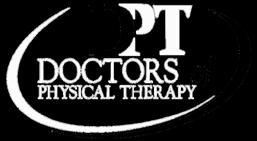
Did self-isolation leave you with new aches and pains? Do you feel physically deconditioned? STOP PUTTING OFF YOUR ACHES AND PAINS! STOP PUTTING OFF YOUR ACHES AND PAINS! Let us help you return to a sense of normalcy Let us help you return to a sense of normalcy and become pain-free! and become pain-free! 136 N. MAIN ST. SUITE 308 THIENSVILLE, WI 53092 (262)-478-0920 Get Better Faster. Get Better Faster. drsofpt.com drsofpt.com June 2023 MHL 1�
Coffee>>page 18
Steeped Iced Coffee Concentrate
Milk
Cocktail shaker
Ice
Optional: sweetener or flavored coffee syrup to taste
Directions
1.Fill cocktail shaker with ice.
2.Add 1-part Steeped Ice Coffee Concentrate and 1 part milk.
3.Sweeten to taste, or replace sugar with flavored coffee syrup to make Vanilla Latte, Caramel Latte, etc.
4.Shake until foamy
5.Pour into a glass filled with ice
Steeped Blended (Frappuccino-Style) Coffee
You’ll need
Steeped Iced Coffee Concentrate
Milk
Blender
Ice
Whipped cream
Optional: sweetener or flavored coffee syrup to taste (see above)
Directions
1.Prepare as for Latte, but whir in a blender instead of a cocktail shaker.
2.Top with whipped cream to taste.
Steeped Iced Mocha
You’ll need
1 serving of Steeped Iced Coffee Concentrate (see above)
Good quality chocolate syrup
Ice
Milk or cream to taste
Whipped cream
Directions
1.Prepare basic Steeped Iced Coffee as above
2.Pour over ice
3.Stir in chocolate syrup and milk or cream to taste
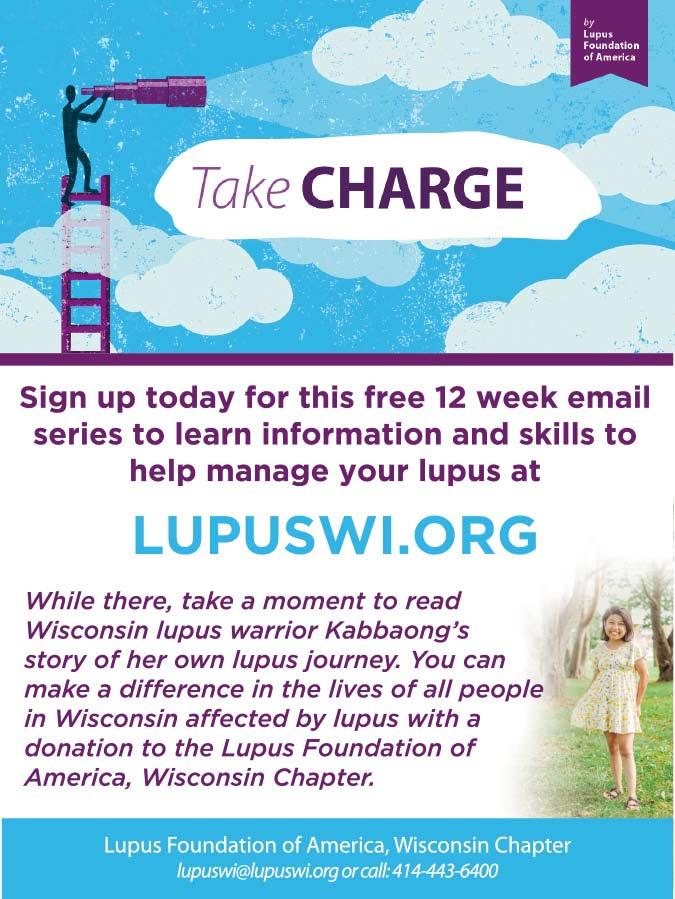
4.Top with whipped cream to taste
Steeped Vietnamese Iced Coffee
You’ll need
1 serving of Steeped Iced Coffee Concentrate
Sweetened condensed milk
Ice
Directions
1.Prepare basic Steeped Iced Coffee as above, omitting sugar and creamer.
2.Stir in sweetened condensed milk to taste.
3.Pour into tall glass over ice.
Steeped Thai Iced Coffee
You’ll need
Extra-strong Steeped Iced Coffee Concentrate (allow bag to steep a few extra minutes)
Sweetened condensed milk OR evaporated milk OR half-and-half
Ice
Ground cardamom
Directions
1.Prepare basic Steeped Iced Coffee as above.
2.Pour into tall glass over ice.
3.Top with your choice of sweetened condensed milk, evaporated milk, or half-and-half, but DO NOT STIR. Sweeten to taste.
4.Sprinkle with ground cardamom
Steeped Spiked Iced Coffee
You’ll need
Steeped Iced Coffee Concentrate (see above)
Liqueur of your choice: hazelnut, orange, Irish cream, amaretto, etc. Ice
Sweetener or creamer (optional)
Directions
1.Prepare basic Steeped Iced Coffee as above.
2.Pour into tall glass over ice.
3.Stir in 1 shot of liqueur.
4.Sweeten and top with creamer to taste. Stir and enjoy.
One simple yet effective way to reduce waste and our overall impact on the environment around us is through composting! While composting is probably a familiar term to most of you, we’re going to spend some time breaking down (pun-intended) the major themes of composting to really understand why it’s important and why compostability matters in your day-today products.
First and foremost, “composting” is the process of breaking down organic waste into nutrient-rich soil, which can then be used to grow plants and crops. Because the process of composting enriches the soil it creates, it also reduces the need for harmful chemical-based fertilizers that tend to wreak havoc on our environment and our collective well-being. Just from its base definition, this process not only creates usable soil but also promotes a more sustainable and healthy approach to farming and gardening. About Steeped Coffee
Steeped, Inc. based in Santa Cruz, California, is a Certified B Corp and Benefit Corporation focused on every detail from farm-to-cup and beyond, to bring people the most convenient, quality, ethically sourced, and sustainably packaged products available. Steeped is the new standard in coffee helping to make quality coffee more accessible through its proprietary technology and Steeped Brewing Method that is licensed to over 450 of the top specialty roasters around the globe. Steeped delivers 100% freshly roasted, precision ground, and nitro-sealed specialty coffee pre-portioned within Steeped Full Immersion Filters. Simplified.
Visit www. steepedcoffee.com/

Coffee<<page 17
1.Just Breathe — If you feel tension building in your body while you read the news or your Facebook feed, that’s a sign it’s time to take a breather — literally. Close your eyes and focus for a few minutes on taking deep, regular breaths. This type of meditation can help to calm your nerves and renew your energy.

2.Focus (Stop Multitasking!) — Choose a project, errand, or activity and do only that. Trying to do too many things at once and pushing too hard on multiple tasks might compromise the quality of everything you manage to get done. Concentrating on a single task may give your brain a break.

3.Cleanse Yourself of Toxins — This includes everything from artificial ingredients in food and drink to negative energy in your social circle. Take stock of the things that might be toxic in your life. Try to identify bad habits, and strive for healthy living by eliminating them. Adopt a healthy way of eating to keep your system as clean as possible. If there is someone in your life that absolutely drains you, it may be time to change your relationship with that person.
4.Avoid Digital Exhaustion — In this time of rage tweets, cyber-bullying, and bad news, give yourself a break from the negativity. If you feel worry, tension, apprehension, or anger building as you surf your news feed, take that as a sign you should disconnect for a bit. Go for a walk, read something uplifting, or spend a few minutes connecting with someone you love to break the cycle of stress.
5
Holistic Self-Care Practices for More Calm, Joy, & Peace
It’s evident that we need to better care for ourselves so we can care for those we love and meet the challenges we face,” Dr. Brad says. “There are many simple practices that may boost our mental, emotional, and physical health and help us find greater joy, calm, and peace.”

Many forms of self-care are simple and easy to practice, if we just remember to take the time. Here are a few of Dr. Brad’s suggestions:
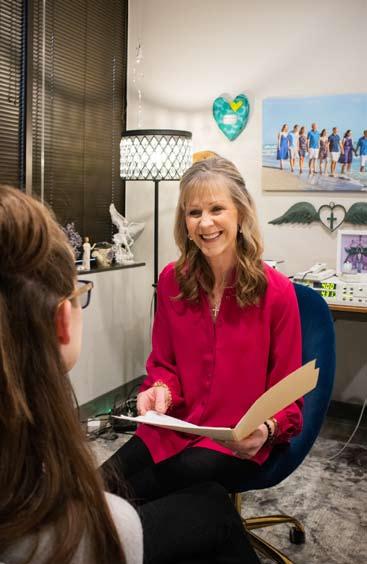
5.Release Trapped Emotions — Traumatic and difficult events from the past can leave us with unresolved emotional energy in the form of Trapped Emotions — negative energies that can literally become trapped within. Discover how you can use energy healing practices such as The Emotion Code® and The Body Code™ to identify and resolve emotional baggage and other imbalances that may be harming your health and relationships or otherwise holding you back in life.
About Dr. Bradley Nelson: Veteran holistic physician Dr. Bradley Nelson (D.C., ret.) is one of the world’s foremost experts on natural methods of achieving wellness. He is the creator of The Emotion Code and The Body Code system, and the CEO of Discover Healing, a holistic education platform that provides training and certifies practitioners worldwide. His bestselling book “The Emotion Code” provides step-by-step instructions for working with the body’s energy healing power. His new book is “The Body Code: Unlocking Your Body’s Ability to Heal Itself”
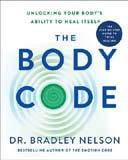
June 2023 MHL 1� Wellness
Bleachers
JUNE

20 MHL May 2023
Tantrums
Fleet
Destroy Lonely Dirt Band Larry
• Thomas Jack • Ruby Waters • Allison Ponthier • Paris Paloma • Vanilla Fudge • Chris Duarte Forester • Frank Walker • PARTY SHIRT • Fleece
Mindi Abair Caroline Jones
� JULY
Wind & Fire • Joe Russo's Almost Dead • Ava Max • Lord Huron • Yellowcard
Gravy • Vance Joy • Cypress Hill • Coi Leray • Brett Young • Flyleaf with Lacey Sturm
Paul • lovelytheband • Mitchell Tenpenny • 38 Special • Night Ranger • Greensky Bluegrass
Planets • Spin Doctors • Jesus Jones • Nicky Youre • Beach Weather • Wang Chung A Flock Of Seagulls • Debbie Gibson • Survivor • Nate Smith • Mat Kearney • The Georgia Satellites
• John Cafferty & The Beaver Brown Band • Thaikkudam Bridge • Shinyribs • Lucius Arthur BabyJake • The James Hunter Six • The National Parks • Andrew Duhon
6 � 8
•
• Tyler Hubbard • Fleet Foxes • The
Drugs
Reckless • Yungblud • Japanese Breakfast • Styx • Grupo Niche • Tesla Dinosaur Jr. • Jenny Lewis • WALK THE MOON • Ne-Yo • Scotty McCreery • bbno$
Clay • Collective Soul • Dylan Scott • Smash Mouth • Built To Spill • Morgan Wade • Runaway June Galactic ft. Anjelika Jelly Joseph • Cafuné • Hailey Whitters • Andy Shauf • The Mountain Goats Saliva • The Gufs • Frank Ray • The Regrettes • Buckcherry • Joey Valence & Brae • Soul Asylum Here Come The Mummies • Tito Puente, Jr. • Horsegirl • The Beaches • Leah Kate • Greylan James • Corey Kent Kalie Shorr • The Docksiders • Annie Bosko • Jet Black Roses • Momma • Lifeguard Piqued Jacks • Good Boy Daisy • Disq TBA ZACH BRYAN 7/ 7 IMAGINE DRAGONS W/ AJR 7/8 DAVE MATTHEWS BAND 6/29 ODESZA W/ BONOBO �DJ SET�, DRAMA, QRTR & OLAN 6/30 A BOOGIE WIT DA HOODIE TRIPPIE REDD W/ KIA RAP PRINCESS 7/1 MILWAUKEE, WI SUMMERFEST 2023 PRODUCED BY MILWAUKEE WORLD FESTIVAL, INC., A 501(C)(3) NOT FOR PROFIT CORPORATION TICKETS AVAILABLE AT SUMMERFEST.COM
29
1 Earth,
Yung
Sean
Digable
JORDY
JULY
Lauren Daigle
Smokey Robinson
War On
The Pretty
Cautious
Awesome Summer Events

Wisconsin Beer Lovers Festival
Time & Location
Jun 17, 2023, 12:00 PM - 5:00 PM
BAYSHORE, 5800 N. Bayshore Drive, Glendale, WI
Attention all beer enthusiasts! The highly anticipated 2023 Wisconsin Beer Lovers Festival is back and better than ever. Presented by the Wisconsin Brewers Guild, this beer fest is set to be the ultimate beer and food tasting experience of the summer. Prepare yourself for an extraordinary showcase of over 50 craft breweries from across the state, alongside local restaurants, cuisine partners, food trucks, live bands, and a whole lot more! When you purchase a ticket, you gain access to an array of exciting benefits. Enjoy complimentary beer samples, savor delectable food samples, and engage in conversations with both craft brew masters and fellow enthusiasts. This festival is a perfect opportunity to explore the rich flavors of Wisconsin’s craft beer scene and make lasting memories. Make sure to secure your tickets for the 2023 Wisconsin Beer Lovers Festival, where the best of craft beer and culinary delights await. Don’t miss out on this premier event—join us for an unforgettable celebration of all things beer!
Live Music!
12:00pm-2:30pm - Joe 2.0 2:30pm-5:00pm - V Funk
Food Truck Alley Vendors
El Sazon Dominicano, Meat on the Street, Shorty’s Grilled Cheese, Tots on the Street, Twisted Plants
**You must be 21+ to attend the Wisconsin Beer Lovers Festival. Alcohol carryins, animals and children are prohibited from entry.
Tickets: wibrewersguild.com/WIBLF
Summerfest, The World’s Largest Music - Milwaukee
June 22-24, June 29-July 1, July 6-8
Summerfest presented by American Family Insurance will celebrate its 55th anniversary in 2023. To commemorate this iconic milestone, the festival announced a few of the upcoming promotions for the anniversary year!
Since its inception in 1968, Milwaukee World Festival, Inc. (MWF), producer of Summerfest is proud to fulfill its nonprofit mission of bringing the community together and providing a showcase for the performing arts, activities, and recreation to the public, through music and special events.
“55 years of music, food, fun, and unforgettable memories will bring us together as we celebrate Summerfest’s 55th anniversary next year,” said Don Smiley, CEO of Milwaukee World Festival, Inc. “Mayor Henry Maier’s vision of Summerfest has now grown into one of the largest and most diverse music festivals anywhere. We are proud to continue that legacy and look forward to celebrating with our fans, sponsors, and artists in 2023.”
Summerfest’s 55th-anniversary activities and promotions
Summerfest presented by American Family Insurance was created as a way to bring the community together and showcase Milwaukee. We’ve organized some Summerfest-themed activities to get you excited as we countdown the days until the big 55. Tickets: www.summerfest.com/ticket-info
Celebrating the 40th Anniversary of Bastille Days
July 13th – July 16th
This summer, the city’s beloved French festival will be celebrating its 40th year anniversary! Patrons can expect great food, entertainment, the infamous Storm the Bastille Run/Walk, along with some fresh new twists to create an authentic French flavor. Free Admission for festival.

Sign up for the Run/Walk: runsignup.com/stormthebastille5k
Celebrating the 40th Anniversary of Bastille Days
July 15th- July 16th - Rotary Park
Listen to your HEART: come to Gathering on the Green on Saturday, July 15th to see the incredible Ann Wilson of Heart sing her hit songs “Crazy on You,” “Barracuda,” “Alone,” and so much MORE!
Tickets: gatheringonthegreen.my.salesforce-sites.com
made simple! Summer made simple!
June 2023 MHL 21 4 stores in Metro Milwaukee 24/7 online shopping www.outpost.coop
You’ve got better things to do so leave the cooking to us. Stop in and check out our tasty ready-to-eat grab & go options today!
Summer
A Morning Fatigue-Reduction Schedule That Works
By: Danielle Pashko, Holistic Nutritionist
Living with immune-compromising illnesses like Lyme disease or long COVID-19 can be a challenging experience, especially when accompanied by persistent fatigue, one of the most debilitating symptoms that negatively affects daily activities and quality of life. However, by implementing a well-structured fatigue-reduction morning schedule, you can effectively manage energy levels and improve the ability to cope throughout the day.
Prioritize Sleep
The No. 1 step you can take to reduce fatigue is to prioritize sleep. This is where the healing begins. To start, establish a consistent sleep routine by going to bed and waking up at the same time every day, even on weekends. Avoid staring at stimulating blue light from your devices before falling asleep. Upon waking, do not be tempted to check emails, texts or social media feeds. Making
sleep your No. 1 priority, can optimize your body’s natural recovery process at the start of your day.
Combine Compression with Meditation
Compression therapy can be beneficial with improving circulation, reducing swelling, and alleviating symptoms associated with immune compromising illnesses. Combining this activity with a daily meditation or prayer practice can set the body up for a good start to the day. Compression therapy involves the use of specially designed garments, such as compression socks or boots that apply gentle pressure to the limbs. By wearing compression garments, blood flow is optimized, promoting the delivery of oxygen and nutrients to tissues, while flushing out waste products. I spend 30-40 minutes in compression therapy, and find this is the perfect time for my meditation and prayer time. The power of the mind-body connection is undeniable. Engaging in meditation or prayer can help reduce stress, promote emotional well-being, and enhance the healing process.
Engage in Stress-Reduction Exercises



Stress can significantly impact fatigue levels. Engaging in stress-reduction exercises at the start of your day, such as gentle yoga or a morning stroll, can go a long way. I spend 20 minutes every morning on my yoga mat, but on some days, when I have more energy, I also enjoy leisurely walking to my office, while listening to a motivational podcast. Find what works best for you and incorporate stress-reducing exercises into your morning routine to promote relaxation and improve energy levels before you dive into meetings and emails.
Fuel Up with the Right Nutrients
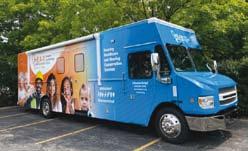
If your car runs out of gas, you aren’t going anywhere unless you fill it up. This is a great analogy for why starting your day with a healthy breakfast and the right nutrients is so important, especially if you want to avoid running out of energy before Noon. I’ll usually start my day hydrating with water and then eat a breakfast that consists of either organic oatmeal with berries and almonds, a green smoothie, or organic eggs with avocado. While I’m eating, I also take my daily immune modulating supplements, including a Shiitake-derived mushroom supplement called AHCC that has been extensively researched in more than 30 human clinical studies and has been studied on both Lyme disease and COVID. Mushrooms have long been valued for their immune-boosting properties, however only certain varieties, such as reishi, cordyceps, and maitake, contain bioactive compounds that can modulate the immune system and enhance its response,
Morning<<page 47
22 MHL June 2023 Audiology on Wheels? That’s Right! HEAR Wisconsin’s new Moblie Audiology Clinic is hitting the road in Wisconsin communities! Learn more at www.hearwi.org Are you in need of new assistive technology, such as an iPad, smart phone (iPhone or Samsung), and want to learn how you can purchase them at a reduced cost with the TEPP Voucher? Visit our state-of-the-art, beautifully renovated Assistive Technology Center and meet at no charge with technology experts to determine your needs for the latest assistive devices. Appointment is preferred. Walk-ins Welcome! Call or visit us today or get more information at hearwi.org We are conveniently located on 102nd and National Ave. Address: 10243 W. National Avenue, West Allis, WI 53227 Phone: 414-604-2200 Email: info@hearwi.org
Energize
surprising health benefits of walking Bare Feet and why it’s growing in popularity
Waking off your shoes and connecting with the Earth may offer more perks than you’d think.
Walking barefoot, also known as “earthing” or “grounding,” is a practice that many of us associate with childhood or beach vacations. However, this seemingly simple act has been gaining attention in recent years for its potential health benefits. From boosting mood to improving sleep, a growing body of research shows that taking off your shoes and connecting with the Earth may offer more perks than you’d think.
Few people know this better than Chong, who is a foot expert and works closely with people to help them strengthen their fascia connection from their feet to their glutes. Fascia is the thin casing of connective tissue that surrounds and holds blood vessels, bones, nerve fibers and muscles in place.
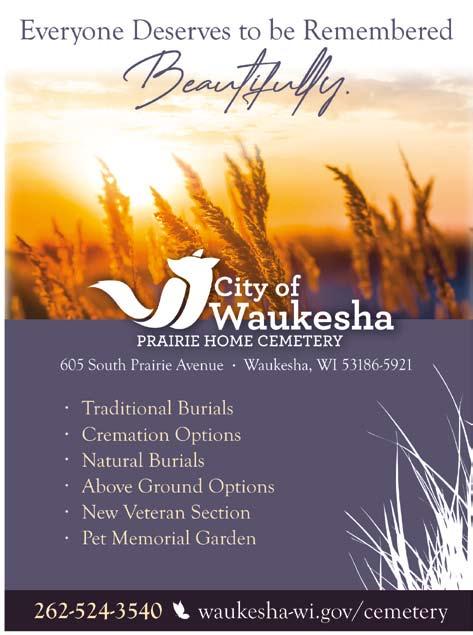
According to Chong, walking barefoot as a child and doing sports with bare feet are critical to developing healthy and robust fascia connections, which helps to prevent injuries and improve athlete performance. A growing body of research indicates walking barefoot also has many other health benefits including the following:

•Improved Balance and Posture
Walking barefoot can help improve balance and posture. Shoes often alter the way we walk, and over time, this can lead to imbalances and pos-
tural problems. Walking barefoot, on the other hand, allows us to move in a more natural way and can help correct these issues.
•Reduced Inflammation
Preliminary research suggests that grounding may help reduce inflammation in the body. Chronic inflammation is believed to be at the root of many health problems, including heart disease, diabetes, and certain types of cancer. By potentially reducing inflammation, walking barefoot could help protect against these diseases.
•Better Sleep
Some studies have found that grounding can help improve sleep. While the exact mechanism is still not fully understood, it’s thought that the natural electrical energies from the Earth may help regulate the body’s circadian rhythms, leading to better sleep.

•Enhanced Mood
Walking barefoot, especially outdoors, can be a great mood booster. The combination of physical activity, contact with nature, and the sensory experience of feeling the ground beneath your feet can all contribute to feelings of well-being.

•Reduced Pain
Some people find that walking barefoot helps alleviate chronic pain, particularly in the feet and joints. Again, this may be due to the natural movement patterns that barefoot walking encourages, as well as the potential anti-inflammatory effects of grounding.
June 2023 MHL 23 www.ModernHealthandLiving.com
Footcare
Lifestyles MODERN HEALTH AND LIVING Senior

www.missioncreekofeden.com
WHO WE ARE
WHO WE ARE
Mission Creek is the best local assisted living and memory care for you, your family, friends, and loved ones. We work hard to keep our residents and this community great.
Mission Creek is the best local assisted living and memory care for you, your family, friends, and loved ones. We work hard to keep our residents and this community great.
WHAT WE DO
WHAT WE DO
We work directly with our residents and their families to keep everyone involved with their interest and pursuits. Your community remains at the center of life, alongside top-of-the-line care for a comfortable and fulfilling lifestyle.


We work directly with our residents and their families to keep everyone involved with their interests and pursuits. Your community remains at the center of life, alongside top-of-the-line care for a comfortable and fulfilling lifestyle.
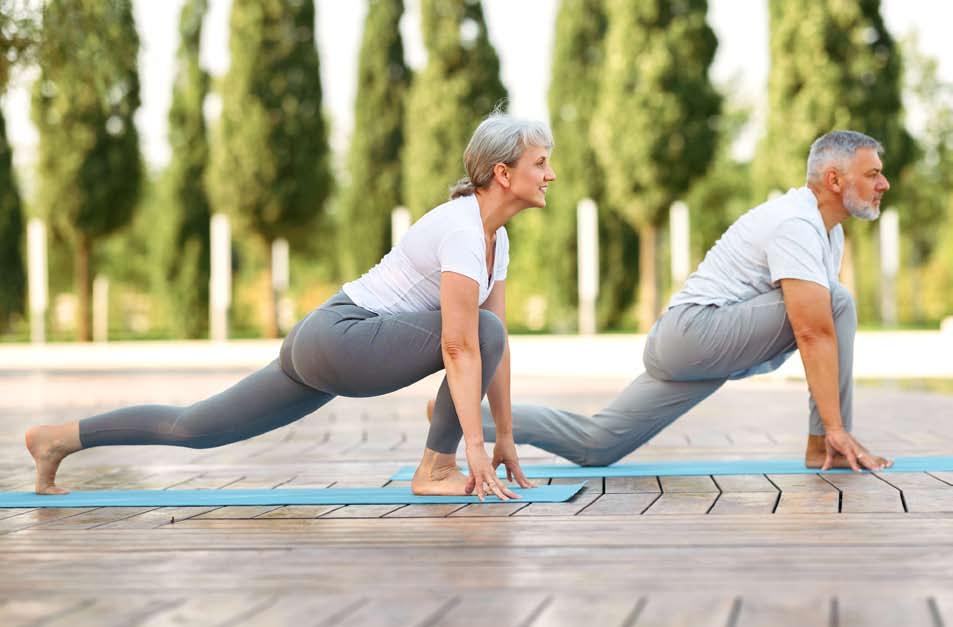
VISIT SENIORLIFESTYLE.COM OR CALL 262-896-8888 TO LEARN MORE.
MISSION CREEK
Mission Creek 3217 Fiddlers Creek Dr, Waukesha, WI 53188 (262) 832-1020
A POSITIVE GUIDE TO THE NEXT PHASE OF LIFE 24 MHL June 2023
Staying active and maintaining A Healthful Lifestyle
Revitalize Wellness Corner with Lee Zehm-Clay RN, BSN, FCN, HES St. Camillus Revitalize Wellness Manager

Staying active and maintaining a healthful lifestyle is important at any age, however, it can be a bit more challenging as we get older. Let’s face it, lack of motivation, a few more body aches and a slower response time all contribute to a willingness to be less active. It doesn’t have to be that way. In fact, there are several benefits to being an active older adult.
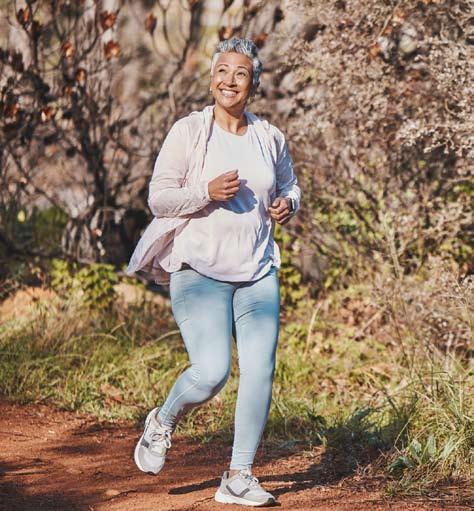
1) Positive mental health. Moving your body helps to stimulate the production of endorphins (the feel good hormone) and reduces the production of nasty stress hormones such as adrenaline and cortisol. These chemical reactions reduce anxiety and trigger positive feelings.
2) Maintaining physical strength. Stronger bodies help us walk “taller” by sustaining better posture and balance. Other health benefits include improved metabolism, increased muscle mass and improved self-image.
3) Improved healing. Yes it’s true - staying active improves your immune system! Help promote your healing process and boost your immunity by staying active.
4) Better Sleep. About 50% of older adults report difficulty sleeping. Poor sleep comes with a slew of problems: daytime drowsiness, poor quality of life, obesity, as well as metabolic and cardiovascular issues. An active, daytime lifestyle will pay off with a better night’s sleep.
I encourage you to take this summer to improve your health by being more active. This will improve your mind, body and spirit while keeping you as independent as possible.
For more about St. Camillus Life Plan Community and the Revitalize Wellness Program, call 414-259-6310 or visit www.stcam.com.

June 2023 MHL 2�

Cognitive Reserve

THE AGING BRAIN
can do as well. There is growing evidence that the brain remains “plastic”—able to adapt to new challenges and tasks—as people age.
It is not clear why some people think well as they get older while others do not. One possible reason is “cognitive reserve,” the brain’s ability to work well even when some part of it is disrupted. People with more education seem to have more cognitive reserve than others.
Some brain changes, like those associated with Alzheimer’s disease, are not a normal part of aging. Talk with your healthcare provider if you are concerned.
Brain Regions
Graphic of human brain showing parietal occipital, and temporal lobes, frontal lobe, and cerebellumThe brain is complex and has many specialized parts. For example, the two halves of the brain, called cerebral hemispheres, are responsible for intelligence.
Some changes in thinking are common as people get older. For example, older adults may have: increased difficulty finding words and recalling names more problems with multi-tasking mild decreases in the ability to pay attention
Aging may also bring positive cognitive changes. People often have more knowledge and insight from a lifetime of experiences. Research shows that older adults can still:

learn new things
create new memories
improve vocabulary and language skills
The Older, Healthy Brain
As a person gets older, changes occur in all parts of the body, including the brain:
Certain parts of the brain shrink, especially those important to learning and other complex mental activities.
In certain brain regions, communication between neurons (nerve cells) can be reduced.Blood flow in the brain may also decrease.
Inflammation, which occurs when the body responds to an injury or disease, may increase.
These changes in the brain can affect mental function, even in healthy older people. For example, some older adults find that they don’t do as well as younger people on complex memory or learning tests. Given enough time, though, they
The cerebral hemispheres have an outer layer called the cerebral cortex. This region, the brain’s “gray matter,” is where the brain processes sensory information, such as what we see and hear. The cerebral cortex also controls movement and regulates functions such as thinking, learning, and remembering.
How Brain Cells Work
The healthy human brain contains many different types of cells. Neurons are nerve cells that process and send information throughout the brain, and from the brain to the muscles and organs of the body.
The ability of neurons to function and survive depends on three important processes:
Communication. When a neuron receives signals from other neurons, it generates an electrical charge. This charge travels to the synapse, a tiny gap where chemicals called neurotransmitters are released and move across to another neuron.
Metabolism. This process involves all chemical reactions that take place in a cell to support its survival and function. These reactions require oxygen and glucose, which are carried in blood flowing through the brain.
Repair, remodeling, and regeneration. Neurons live a long time—more than 100 years in humans. As a result, they must constantly maintain and repair themselves. In addition, some brain regions continue to make new neurons.
Other types of brain cells, called glial cells, play critical roles in supporting neurons. In addition, the brain has an enormous network of blood vessels. Although the brain is only 2 percent of the body’s weight, it receives 20 percent of the body’s blood supply.
BE AMONG THE FIRST! JOIN THE LUMINARY CIRCLE. NORTH SHORE’S NEWEST ASSISTED LIVING & MEMORY CARE WELCOME CENTER NOW OPEN! CALL SAMANTHA TO SCHEDULE A VISIT 262�261�7099
June 2023 MHL 2�
OpeningSpring2023
Independent, Senior Communities

Alta Mira II offers one & two bedroom apartment homes for those 55 & older. Alta Mira II is a non-smoking community that was constructed with special features for those who may be deaf or hard of hearing. Alta Mira II offers an array of amenities and social activities for its residents. Income restrictions apply.
Bell Tower Place is a non-smoking community offering elegant one & two bedroom apartment homes. Located in a quiet, residential neighborhood you are still situated in close proximity to all the modern conveniences you will need to live an independent, maintenance-free lifestyle.
Cedar Glen offers spacious one & two bedroom apartment homes centrally located in Wauwatosa, just 10 minutes from all of your shopping & dining needs. A variety of activities, 24-hour emergency maintenance and on-site management allow for the independent lifestyle you deserve! Income restrictions apply.
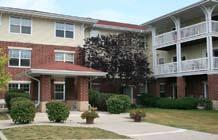
Granville Heights offers one & two bedroom apartment homes in a non-smoking community. Centrally located, you will have easy access to churches, grocery stores, restaurants and more while enjoying a relaxed, maintenance-free lifestyle within the community. Income restrictions may apply.

High grove offers luxury one adn two bedroom independent senior apartments located on the Woodland Ridge Campus. Our spacious apartmetns incldue a patior


Our non-smoking community is the perfect place to call home.
Hill Crest, located on the Woodland Ridge Campus offers centrally located one adn two bedroom apartment homes fo rthe independent senior. In close proximity to all of your shopping, dining and entertainment needs, our social activities will have your social calendar full year-round. Income restrictions may apply.
Located on the Woodland Ridge Campus adjacent to the Towering Woods Nature Conservancy, Crestview offers one & two bedroom apartment homes in a non-smokin, pet-friemdly (restrictions apply) community. Enjoy an indepdendent lifestyle with 24-hr. emergency maintenance available. Income restrictions may apply.
tour at any of our Horizon managed properties www.horizonseniorhousing.com


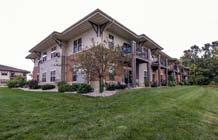
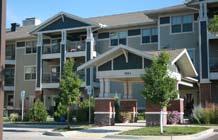
Alta Mira II Menomonee Falls - 55+ 262-719-3884 Cedar Glen Wawautosa - 55+ 262-719-3884 Bell Tower Place Franklin - 55+ 414-254-8410 Granville Heights Milwaukee - 55+ 414-357-6740
Live your best life! Call for a tour today!
High Grove 414-541-3333 We invite to take a
Hill
Crest
Crest* 414-541-3333
View* 414-541-3333
Downsizing for a relaxed Retirement



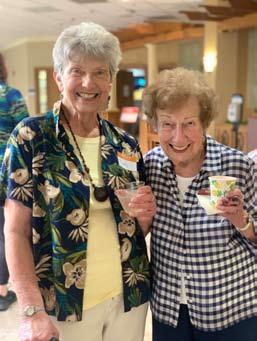
A Few Things You Should Know To Help Get Ready
Summer is here and you’ve decided your home may be too large, too costly to maintain, too difficult to maintain, too unsafe without expensive safety features to meet your needs, too far from transportation, or too far away from shopping centers and medical offices. Your home has become an inconvenience and now you’ve decided to buy or rent a smaller home or apartment.
It’s a good time to make your next move. Now that the weather has become warmer it makes it easier to get around searching for your next residence.
It’s a challenge to make the move to a new place after all the years you’ve spent creating and taking care of your current home. If you own your home and plan to sell you might want talk to your realtor about a Competitive Market Analysis so you can estimate a selling price. If you are renting and you need some advice on your move you can always find a moving coordinator to help you make the transition. Of course, many people simply choose to rely on family and trusted friends to help them make a move. You’ve spent your life helping them out, now it’s their turn to help you. We’ve put together some moving tips that should make your move easier.
Seems pretty simple, but consider many things. Would you like to be close to family, friends, shopping centers, healthcare facilities? Will you need to use transportation other than your car? Will you have access to recreational activities? Do you want to climb flights of stairs? Do you want maintenance-free living? Is it secure and safe? Do you need assistance with daily activities? Can you keep your pet? Research new home alternatives long before you make your move. Spend time in the area where you plan to move and get answers to all your questions.
Whether you are moving to a smaller home, apartment, or senior residence you need to downsize your possessions. Sort through your belongings and keep what you absolutely need. Go to the least used rooms and areas first. Sort only a few hours at a time to avoid being overwhelmed. At this time you should create a floor plan of your new living space showing each room and the placement of each piece of furniture. Take measurements of each room. Make a note of doors, windows, outlets. Take measurements of your furniture. Give the remaining items to family and/or friends. Think about having an estate sale, a tag sale or donating belongings to charities (many charities will pick up the items at your home). Keep in mind space limitations. Let family members know what you plan on taking with you. Make a schedule of the times when you expect to have family members, friends, or charities pick up the items. Clearly label all items, use colored stickers to mark what will or will not go to your new home. This will help you remember what goes where when you begin packing.
If you plan on selling your home it’s time to make minor repairs and note major repairs which you should report to your realtor. Small repairs make the home look well cared for and usually cost little time and money. These details make a difference in how the buyer views the home. Itemize cosmetic changes such as fresh paint or new carpets. The home looks ready to move into. Be sure to keep up the exterior maintenance of your home. Remove interior clutter. All of these tips create a favorable impression on a buyer. Renters make sure your apartment is clean and contact your apartment manager to discuss what time your apartment will be shown.
Contact your utility companies and let them know what day you plan to move. Fill out change of address forms for the post office seven to ten days before moving day.
Make sure you have phone service at your current home and new home on moving day. Have the name of the contact of your new apartment or senior residence ahead of time. Know the name of the person you need to contact if a situation comes up on moving day.
LIVE THE HARWOOD
Reduced entrance fees on select models! Ask about FREE DINING for a year! 8220 Harwood Avenue, Wauwatosa | harwoodplace.org | 414-256-6814
LIFESTYLE
ENJOY
June 2023 MHL 2� Retirement Planning
—
RETIREMENT
Why Proper Nutrition is Key to Healthy Aging
It’s common for our eating habits to change as we age. Consuming less calories is normal as our appetites begin to decrease. This is mainly due to the fact that the older we get the more our metabolisms slow down. Plus, usually our activity levels also decrease as we age. The truth is your body simply requires fewer calories to function well as you continue to age. While it is normal to eat less, when meals are skipped and/or poor food choices are made, your overall health can suffer. This is a trend to avoid, especially as seniors’ bones become brittle and falls become a larger risk.
One of the biggest myths surrounding senior nutrition is that all seniors will inevitably lose their appetites as they age. However, when a senior has no appetite at all, it is usually a sign of a more serious health problem.
Eating a well-balanced diet is key for many reasons, including:
Helping sustain or even increase energy levels.
Keeping all systems of the body functioning properly.

Aiding digestion.
Strengthening bones and teeth.
Building and maintaining memory.
Supporting a strong immune system.
Preventing some lifestyle-related illnesses and diseases.
Lowering the risk for chronic conditions like heart disease, osteoporosis, type 2 diabetes, high blood pressure and more.
Increasing mental capacity.
Proper nutrition is essential to stay healthy, active, and to enjoy a better quality of life. A great way to encourage healthy eating is to stick with meals you enjoy eating as your staples, and explore new recipes. You’re never too old to try a new food! And if you enjoy cooking, get involved with the meal preparation whenever possible.
Healthy Eating Tips for Seniors

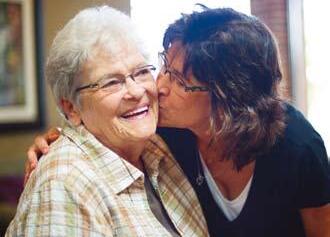
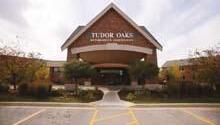
Another senior nutrition myth is that as long as you are eating something, it’s better than eating nothing at all. Seniors with healthy eating habits will live longer and be stronger than those with a poor diet. Another senior nutrition myth is that as long as you are eating something, it’s better than eating nothing at all.
Often seniors find that it’s too difficult or time-consuming to cook a meal, especially if they live on their own and mobility is limited. As a solution, they will turn to pre-packaged foods or frozen dinners. These types of foods are usually high in fat or sodium, and eating them can not only lead to health complications, but also to poor nutrition!
Here are a few tips to ensure you’re getting the proper nutrition you need, even when your appetite starts to decrease:
Don’t increase portion size, increase nutrients. Because seniors’ appetites may be smaller than they used to be, it’s important not to get overwhelmed by a heaping plate of food. Instead, incorporate more nutrients, like spreading peanut butter on toast instead of butter or using milk in your hot cereal instead of water.
Prepare healthy snacks. Try to avoid the convenience of prepackaged salty or sweet snacks. Instead, prepare healthy snacks ahead of time; chop up veggies or portion out whole grain crackers, nuts and fruits into plastic bags or containers. This way, when your stomach starts rumbling, you can easily satisfy it with something nutritious.
Nutrition>>page 43


Tudor Oaks Senior Living Community S77 W12929 McShane Drive, Muskego, WI 53150 414-529-0100 www.TudorOaks.net Tudor Oaks Senior Living Community is owned and operated by American Baptist Homes of the Midwest, a not-for-profit provider of senior housing and healthcare since 1930. Call 414-529-0100 for a tour or visit www.TudorOaks.net for a fly-thru video tour of our community. Tudor Oaks : We’re Always Here For You! ■ Assisted Living : Style-smart, charming private apartments ■ Memory Care: Personal suite with private bathroom ■ Rehab Stays Customized therapy plans, private rooms, TV, phone & Wifi included. ■ Wellness Programs ■ Beautiful Campus Setting Nutrition 30 MHL June 2023

Many of us have favorite songs that can help us relax after a hectic day or get us moving on the dance floor. Music can also be a powerful gateway to memory; for example, a song from our past may bring back memories that trigger strong emotions.
But what is happening in our brains when we hear a song that is meaningful to us? Could music make older adults not only feel better but also improve their health? Much more research is needed before any definitive conclusions can be drawn, but there is growing scientific interest in music’s effects on the brain and body as we age.
How the brain is wired for music and memory
Psyche Loui, Ph.D., leads the Music, Imaging, and Neural Dynamics (MIND) Lab at Northeastern University in Boston. She also plays the violin in Boston’s Longwood Symphony Orchestra and in a variety of local pop and chamber music groups. In the laboratory, she seeks to understand how the parts of the brain that relate to musical perception and processing interact with brain regions controlling learning, memory, and emotions. Interested in music and science most of her life, she first became curious about how music might help people with dementia while volunteering at a nursing home as a high school student.
After little response from residents with advanced dementia to the Beethoven pieces she played on the piano, staff members encouraged her to try something a bit livelier from a book of traditional folk songs. “I just played some old familiar ditties and tunes, and then, amazingly, some of the residents knew all the words and started singing along in close harmony,” said Loui. “That just really struck me.”
Our brains are hard-wired to predict and anticipate familiar rhythms and melodies, Loui explained. It starts with the auditory cortex, the brain region that receives and processes sounds, including voices and music. “When we hear something that we enjoy, that engages not only the auditory cortex, but also the brain’s reward systems that are driven by the neurotransmitter dopamine, which motivates us to seek out and learn new information.”
Another key part of the brain’s dopamine-based reward system is the medial prefrontal cortex, which also processes memories about ourselves. “If I’m listening to music that I’ve enjoyed throughout my life, and that I find familiar, then the auditory system is active, but it’s also communicating and connecting with the medial prefrontal cortex,” said Loui.
Working with like-minded researchers in the Boston area at the Berklee College of Music and Harvard Medical School, Loui and colleagues developed an eight-week mindful music-based listening program for healthy older adults. Participants showed stronger increases


32 MHL June 2023 Mental & Emotional Health
Could “Musical Medicine” influence healthy aging?
in functional connectivity between the auditory system and the medial prefrontal cortex — areas that generally become less active with age — compared to control groups. Their team is now testing out this intervention in older adults with memory impairments, hoping that music can help revive learning and memory functions through this connectivity.
Loui’s latest project is the Multimodal Musical Stimulation for Healthy Neurocognitive Aging study, which is designing and testing a device that pairs music selected by participants with rhythmic, colored LED light patterns. Supported with NIA small business funding, the technology is based on mouse studies in which Alzheimer’s diseaserelated brain deposits of tau and beta-amyloid proteins were reduced through light and sound stimuli. Loui and colleagues are working on prototypes to test the light and sound intervention as a potential therapy for older adults and for people living with mild cognitive impairment or dementia.
Singing
to build cognitive and social connections
Another interesting area of research is the exploration of whether music can strengthen connections not just between our neurons, but also between people, to enhance social networks and reduce isolation and loneliness among older adults.
Julene Johnson, Ph.D., blends her love of music and cognitive neuroscience as a professor at the University of California, San Francisco. Trained as a flutist, she is also the co-director of the Sound Health Network, which falls under the umbrella of Sound Health, a partnership that involves NIH, the National Endowment for the Arts, John F. Kennedy Center for the Performing Arts, and famed soprano singer Renée Fleming. The goal is to expand our understanding of how listening to or creating music might affect overall health and wellness.
Johnson has studied music and the mind for more than 25 years, including through her Fulbright fellowship in Finland to study whether community choir participation affected healthy aging. She also led the
Community of Voices study, which tested the impact of participating in a community choir for six months on the health and well-being of ethnically diverse older adults.
The study involved 390 participants in 12 choirs, many of which are still active today in the San Francisco area. While the research did not show changes in cognitive outcomes, participants reported reduced feelings of loneliness and an increased interest in life. Participants noted higher self-esteem, an enhanced sense of finding a place in society, and stronger cultural identity. The singers also reported beneficial physical effects (including improved breath capacity) and psychosocial effects (such as higher assertiveness and confidence in one’s voice).
Johnson’s current study is testing whether a musical improvisation intervention can improve cognition and brain function in older adults with mild cognitive impairment. “In improvisation, you have to be creative and generate new ideas,” Johnson said. “If you’re too critical of how you’re playing, that interferes with your ability to improvise.” The idea is to learn to tune out or turn off the brain’s critical thinking to get into an in-the-moment “zone.”

Johnson is passionate about training future musical scientists to advance our knowledge about music as a potential therapy. “We don’t understand all of the cognitive, social, or psychological mechanisms by which music can impact health and well-being,” she said. “The next generation needs unique skills to do this very interdisciplinary type of work.”
Can music reduce patient delirium in the ICU?
Between 70% and 80% of intensive care unit (ICU) patients who receive respiratory support from mechanical ventilators experience delirium — a syndrome of sudden, acute confusion that can occur after major surgery or during a serious illness. In some patients, delirium
June 2023 MHL 33
Music>>page 46
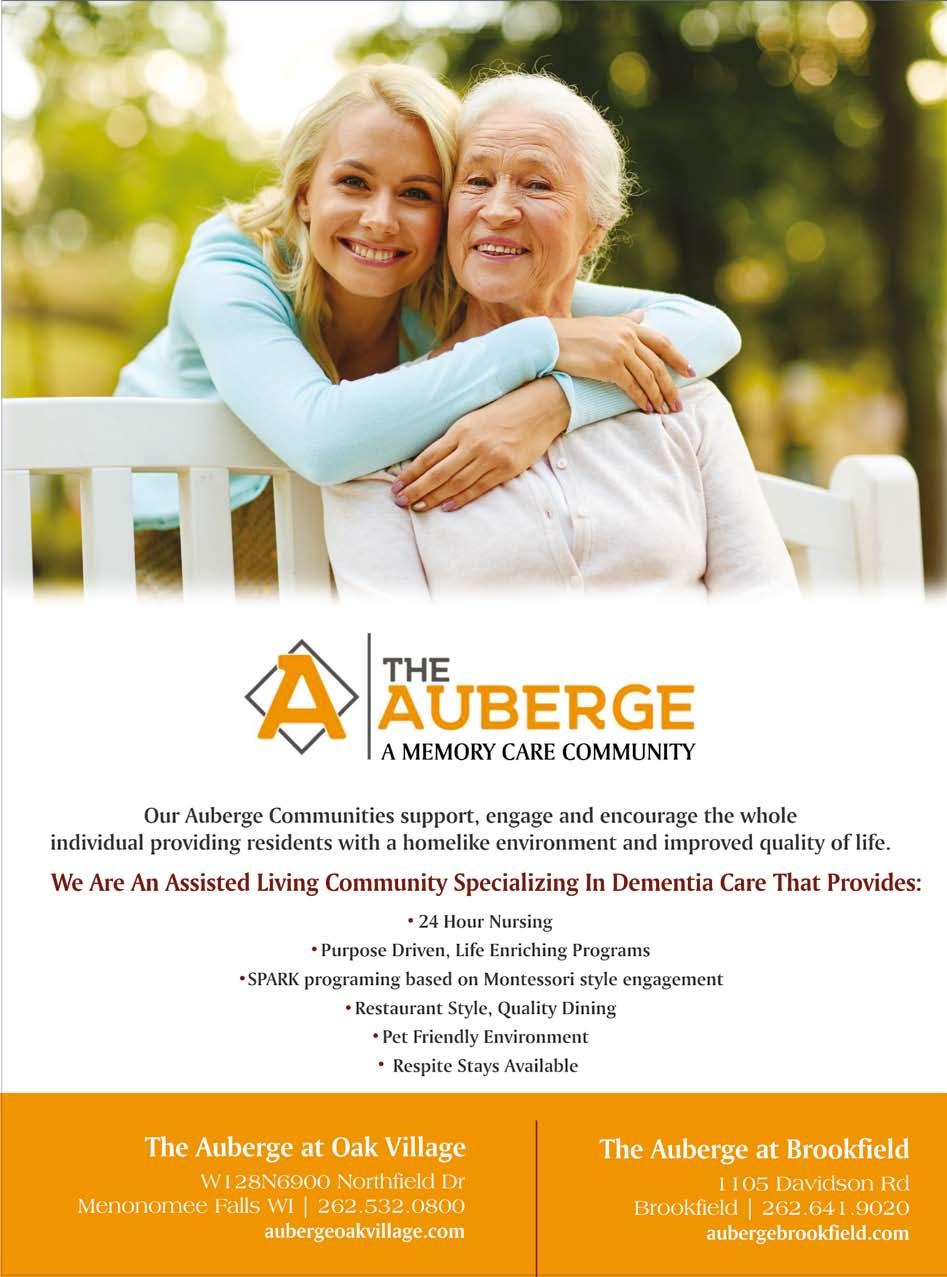
Quick Tips to a Smarter Dog
Keeping a dog mentally stimulated is important. If we don’t pay enough attention to our dogs’ minds, they often become bored or start misbehaving, and their mental health can quickly deteriorate. To avoid these problems, here are 5 quick tips to challenge your dog’s brainpower and turn him into a genius!
1) Go off the Beaten Path

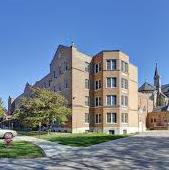
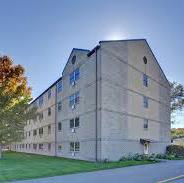
Yes, literally, walk your dog on new routes every once in a while.
If you take your dog on walks using the same path each and every day, he’s missing opportunities to come across anything new. But don’t limit this philosophy to walks; expand it to all areas of your dog’s life. Teach your dog a new skill, let him sniff new places, or try taking part in a
doggy sport.
Keep your dog’s environment full of new and exciting things, and offer him plenty of opportunities to use his brain.
2) Hide Your Dog’s Toys
Dogs can be quite determined when it comes to getting the things they want, so why not use this to put their brains to work? If your dog wants a toy, try placing it under a laundry basket or hiding it under a blanket (making sure he sees you put it there)
Then, sit back and watch him use his problem-solving skills to try and get it. When he solves the puzzle, praise him just as he reaches for the toy. If your dog struggles or gets frustrated, make the exercise easier at first, and then gradually make it harder and harder over time.
3) Increase Your Dog’s Vocabulary
Dogs are always ready to learn new words, so why not take the time to expand your dog’s vocabulary? For example, you could start saying “let’s go potty” just before opening the door to let your dog out. After doing this often enough, your dog should come running over to be let out whenever you say “let’s go potty.”
Dogs are pretty fast to learn to associate a particular action with a word, and are quick to anticipate what will happen next, so you will usually see results very quickly.


4) Never Stop Training

Don’t stop training your dog when he reaches his golden years.
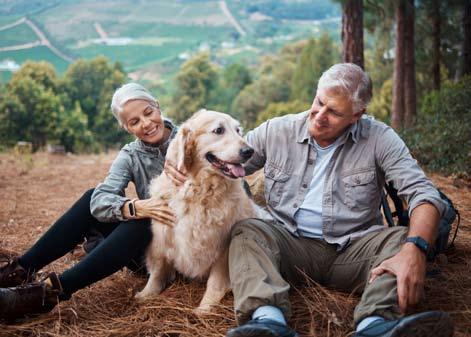
“If you don’t use it, you lose it” especially applies to senior dogs.
Yes, old dogs can learn new tricks, the only thing is, they may take just a little bit l onger to learn them, but be patient and you’ll be pleasantly surprised. So don’t let that brain go to rust, a dog’s brain never loses its ability to learn new things so long as you give it the chance.
5) Brain Training for Dogs

The brain is like a muscle – if you don’t challenge it, it won’t grow!
That’s why the best way to make your dog smarter is by teaching him special “brain games” and “brain exercises.” Brain games are fun little games you can play with your dog to teach him new skills and increase his intelligence. Here’s a great “Brain Training for Dogs” course containing 21 awesome brain games, including treasure hunts, hide and seek, playing the piano, and much more, that will take you step-by-step as you turn your dog into a well-behaved and obedient genius! Be sure to check it out here:

June 2023 MHL 3�
Caring for your Pet
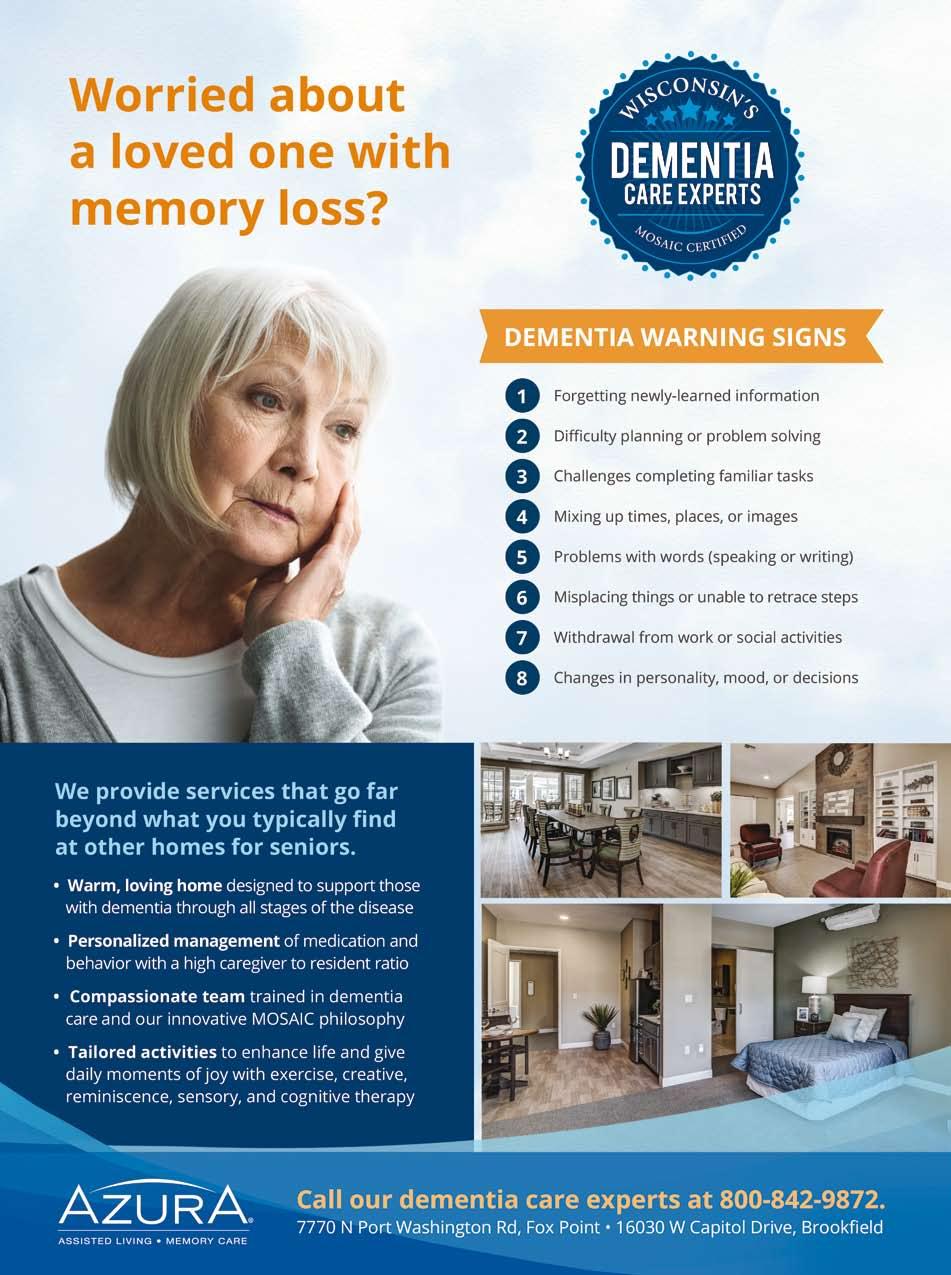
January 2023
Who Benefits from Rehabilitation?
Rehabilitation focuses on function. Being able to continue to function is key to maintaining or regaining independence and quality of life, particularly after an illness or injury. Starting rehabilitation early can help you maintain function and increase your chances of returning to your previous level of function as much as possible.
In restorative rehabilitation, the goal is to restore a function that you have lost. It is often funded by Medicare or other payers. Examples include short-term rehabilitation that usually follows a stroke or a hip fracture. In maintenance rehabilitation, the goal is to maintain and strengthen a function. Maintenance rehabilitation is less intense, with physical therapy or occupational therapy continued three times a week as an outpatient. With longer-term therapy, possibly more function can be gained or more functional loss can be prevented.
Who Benefits from Rehabilitation?
When evaluating a disability, your health care provider will focus on under-
standing how the loss of function developed and progressed over time. Other vital factors in predicting whether function can be regained are how severe the loss of function is, what caused it, and the potential for recovery.
The level of function you had before a disability is an important consideration in the level of function you can expect to regain after rehabilitation. For example, if a healthy older person who walks without a cane falls and fractures a hip, he or she will likely be able to walk again after several months of a rehabilitation program. However, the same goal is not as realistic for someone of the same age who was already having a hard time walking (possibly due to arthritis or bad circulation) before suffering a hip fracture.
If a person has additional medical conditions, such as heart, lung, or joint diseases, his or her participation in an intense rehabilitation program may be limited. However, many people can still improve their ability to exercise gradually even if they have moderate to severe heart and lung disease.
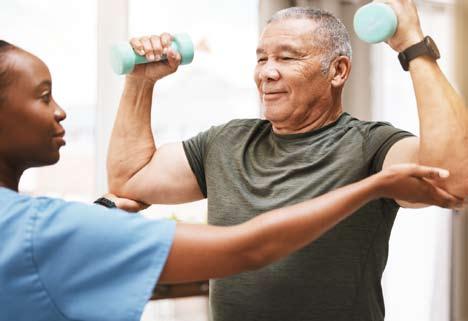
Another important factor in successful rehabilitation is commitment to an ongoing program. Commitment is important not only for the person who has lost some function, but also for family members (or other caregivers) when he or she returns home after the rehabilitation program. What the older adult and his or her family expects and prefers should also be considered, because rehabilitation programs usually require everyone’s participation. Another reason why everyone should be involved in the decision-making process is because many disabilities of older adults are chronic (eg, arthritis, diabetes, hypertension, heart disease). For older adults to be able to best control their chronic diseases, they should understand the disease or injury, feel confident that they understand and can perform the activities needed to manage their disease and prevent new problems, and be able to monitor their disease status as much as possible.
The type of disability and how severe it is, as well as what the person actually needs to do at home as well as what others can do for the person are important considerations in the decision of whether a person can safely return home after rehabilitation. People living at home should, at the very least, be able to move safely from a bed to a chair, and from walking or a wheelchair to the toilet. For people who have difficulty thinking things through or who have problems with vision, 24-hour supervision may be necessary. Often, the critical factor for discharge from a rehabilitation unit is whether 24-hour support is available at home for those who need it.
Reprint permission from the American Geriatrics Society (www.americangeriatrics.org). For more information visit the AGS online at www.americangeriatrics.org.
From Rehab to Recovery
The specialized skills and services of licensed certified rehabilitation therapists are available on both an inpatient and outpatient basis through Eastcastle Place’s Rehab to Recovery Program. Here, physical, occupational and speech therapies focus on restoring health for residents of East Castle Place, and those residing in Milwaukee, Wisconsin and the surrounding areas, allowing them to return home and back to their lives as quickly as possible.
Eastcastle Place
2505 E. Bradford Ave.
Milwaukee, WI 53211
www.eastcastleplace.com
Before you head home, all-new, private suites make you feel right at home. Comfortable and comforting surroundings in fully-furnished, private rooms with:
› Free flat screen TV
› Wi-Fi Internet access
› Individual temperature controls
› Staff call system
› Private baths
› Telephone in every room
› Plentiful natural light and beautiful views from large windows
Services and amenities to keep you happy and motivated.

› Restaurant-style dining with chefprepared meals
› Transportation to and from area hospitals and physician appointments
› Therapy available six days a week
› Physical, occupational, and speech therapies
› State-of-the-art strengthening and cardio equipment
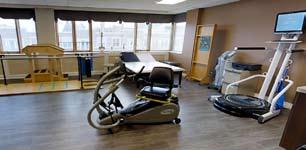
Focus on Function
Contact us today at (414) 963-8480 Eastcastle Your Life AD 3 2023.indd 1 3/20/2023 1:05:57 PM June 2023 MHL 3�
Moving More And Sitting Less Get Active, Wherever You Are
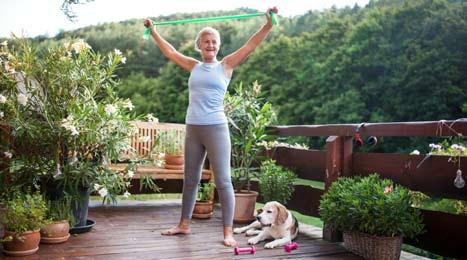

You know that physical activity can help you live a longer, healthier life. But did you know you don’t need to join a gym or use costly equipment to be physically active? No matter where you live, work, or go to school, you can find ways to move more and sit less throughout your day. In addition to helping your health, you might have fun without spending a lot of money.
Moving more and sitting less can reduce your risk for many serious conditions, including heart disease, diabetes, osteoporosis, and certain kinds of cancer. Some studies suggest that physical activity can have mental benefits as well, helping to relieve depression and maintain thinking abilities as you age. Healthful physical activity includes exercise as well as many everyday activities, such as doing active chores around the house, yard work, or walking the dog. Activities that cause you to breathe harder are called aerobic activities. These
make your heart and blood vessels healthier. Aerobic activities include brisk walking, dancing, swimming, and playing basketball. Strengthening activities, like push-ups and lifting weights, help make your muscles and bones stronger and can also improve your balance.
But even though many of us know that physical activity is a good thing, most adults nationwide don’t meet even the minimum recommended amounts of physical activity. (That’s at least 30 minutes of brisk walking or other moderate activity, 5 days a week.)
Why aren’t we more active? “Lack of time is a common reason for not exercising,” says Dr. Mary Evans, an NIH expert on physical activity and nutrition. “Another important factor is location—having safe places to walk and engage in different activities. That can mean having sidewalks, public parks with well-lit walking paths, a shopping mall where you can walk, or other features that can make activity inviting and easy to do.”
NIH-funded research has found that your environment—where you live, work, or go to school—can have a big impact on how much you move and even how much you weigh.
Some communities don’t have safe playgrounds or sidewalks, so kids tend to spend their free time indoors. Sitting instead of moving makes it hard to maintain a healthy weight. Many adults sit behind the wheel driving to work and then sit most of the day at a computer, taking few breaks to stand up and move around. In suburban neighborhoods, people often have to drive rather than walk to get to grocery stores, shops, and even public transportation.
“Our environments have become less friendly to being active. But studies show that people will walk more if the environment provides them with opportunities to do so,” says Dr. Brian E. Saelens, a health psychologist and behavioral scientist at the University of Washington in Seattle. “How close are you to a library? Can you walk to a store? Is there a safe path for walking to school? All of these factors affect how active we are each day.”
Having places to walk and have fun can help more people get moving and active. “It’s not just dangerous neighborhoods, broken streets, and crime that can keep people indoors and away from being physically active,” says Dr. Allen Glicksman, director of research at the Philadelphia Corporation for Aging. “We’ve also found that, from ages 18 to 80, if a neighborhood has someplace nice to walk to—desirable destinations like a book store, grocery store, coffee
38 MHL June 2023 Fitness Active>>page 39
Getting Paperwork in Order: What to Keep, Shred, Recycle/Toss
Clear out: As you are gathering your paperwork for taxes, pull out records older then 7 years and shred it. This is a great time to organize everything by year, so every year you can get rid of the oldest information. You may be able to shred items less than 7 years old. Go to Record Retention for more specific guidelines.
Keep: Create a box or binder to store information that needs to be kept: birth and death certificates, marriage licenses, divorce decrees, Social Security cards, military papers, trusts/wills, and estate planning paperwork. Create another box or binder for information that updates occasionally: insurance policies, car titles, passports, etc.
Recycle or Toss: Junk mail, monthly statements (once you receive a new one), old newspapers, and old magazines. Anything with your social security number or account numbers should be shredded.
Going through paperwork on a regular basis will help you stay on top of it. If it has gotten out of hand, spend 15 minutes a day until you have things in order. If you need help putting a system in place call us at 414-526-5242.

Active<<page 38

shop, a place to eat or meet—it can have a healthful effect on how much people weigh and how much they walk.”
Research also shows that taking public transportation—like buses and trains— can help boost activity. In a recent Seattle-area study, Saelens and colleagues found that people tend to add about 15 minutes of activity to their day when they take public transportation, in part by walking to and from the mass transit site instead of taking a car from door to door. “That’s half the recommended amount of physical activity added to their day,” Saelens says.
Having opportunities to connect with others can also have a positive effect. “Many people are more likely to walk if they’ve got one or more buddies to walk with,” Glicksman says. “When you think about what brings people together, what brings people out and active, the answer can vary depending on your community.” In urban Philadelphia, Glicksman and others have found that neighborhood features like access to public transportation, better bus shelters, and even murals in some neighborhoods seem to encourage more physical activity.
When community gardens were created for older adults in Philadelphia, Glicksman says, “we wanted people to garden to help them eat fresh foods and get them out and moving in the nice weather.” When younger adults joined in as well, the gardens had the added bonus of connecting people across generations. The older adults acted as gardening mentors, while the younger people helped with heavy lifting and digging. “Bringing people together is not only a way to encourage more activity; it’s also a way to get people thinking about how we can change our neighborhoods for the good.”
So take a look around your neighborhood, your workplace, or your school. Can you think of changes that might make the surroundings more inviting for walking or exercise?
“Consider: How can we change our environment so activity is an easier choice for us to make?” Saelens says. In many communities, people have gotten together to organize activities and improve their environments to encourage more physical activity. Steps might include improving local parks, requesting safe and usable bike paths and sidewalks, or asking for more physical activity and healthier meals at schools. If you have some ideas for improving your surroundings, discuss them with your neighbors or local leaders.
Although your environment can affect how active you are, you can still look for new ways to use the world around you to add some movement to your day.
“If you’re at work, try climbing the stairs instead of using the elevator. And get up from your chair and move around at least once an hour,” Evans says. Stand up and walk to a colleague’s office instead of sending an email. Try standing instead of sitting when you’re on the phone, or have “walking” meetings with co-workers instead of sitting in a conference room. And take a brisk walk on your lunch break to get some activity in.

June 2023 MHL 3�
Downsizing
Finding Your Perfect Geriatrician
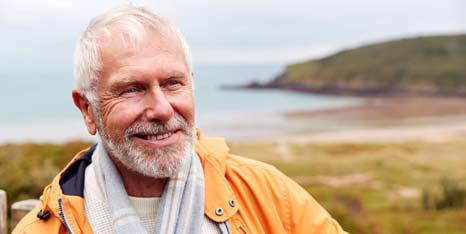
The Ins and outs of Senior Healthcare Providers
Apatient might see the same doctor for decades as people feel comfortable and loyal to their physicians. But as we age, our needs change and considering a geriatrician can become a pressing need. Just like there are pediatricians for babies and children who are specifically trained to check on a young growing body, there are specialty doctors for aging bodies. As parents, we are trained to bring our children to pediatricians right from birth. But at the other end of the spectrum, many seniors and their families do not know when the time is right to reach out to a geriatrician.
What is a Geriatrician
A geriatrician is a physician that is certified in internal or family medicine. These professionals have proficiency in the care of older adults and expertise in navigating the labyrinth of psychological and social problems that often occur among senior citizens. They also specialize in the medical complexities of seniors and many of the chronic conditions they experience.
Geriatricians have a greater understanding of what happens to a senior’s mind and how that affects their cognitive abilities and behavior. Some of these areas of expertise include arthritis, Alzheimer’s disease, dementia, frailty, hearing and much more. They understand issues such as the causes of falls and how to prevent them. These doctors often pay more attention to a patient’s overall quality of life and set goals to keep seniors’ bodies and minds healthy.
These experts also know it’s no secret that senior patients can be, and usually are, prescribed a variety of medications. The more medicine a senior patient is is required to take, the greater the chance of side effects, or dangerous drug addictions and interactions. Complex medication regiments also increase the chances of inadvertent mis-management. Geriatricians know that seniors’ bodies process drugs differently than they did at a younger age, therefore using their expertise to evaluate a patient’s medicine and prioritize which drugs are absolutely necessary.
When Should You Go
Most patients of geriatricians are 65 or older, but there is no set age on when you can start seeing your preferred geriatrician. Experts recommend seeing a geriatrician if you:
Become frail or impaired
Have multiple conditions that require complex care
Manage multiple medications
Find that treatment for one medical condition negatively affects a second condition
Start to feel symptoms of diseases associated with aging such as dementia, incontinence, or osteoporosis
How to Pick A Geriatrician
Picking the right doctor is never an easy task. We all have preferred requirements that differ per individual. John Hopkins put together a list of things to look for when choosing your geriatric physician:
Ask about their training and whether they have special certifications. Check to see if they are affiliated with an academic medical center that usually offers patients the most up-to-date medical care.

Make sure the geriatrician accepts your insurance.
Check to see if there are any in-home services.
Find out how the geriatrician works with other specialists such as cardiologists, pulmonologists and neurologists.

40 MHL June 2023 Healthy Aging
Geriatrician>>page 41
Migraine<<page 10
the question: Do migraines disappear after menopause?
“Most women stop having migraines after menopause, but in some women, menopause triggers migraines,” says Alexander Mauskop, M.D., director of the New York Headache Center in New York City and coauthor of What Your Doctor May Not Tell You About Migraines (Warner Books, 2001).

Overall, aging is linked to a drop in the frequency and severity of migraines, especially in men, says Mauskop.
Was It Something You Ate? Blaming food for your headache is tempting and may be justifiable, but only in some cases. The food-headache connection is tentative at best, even in migraineurs, cautions Mauskop.
First, there is a dearth of scientific research linking food to headaches. It’s difficult to identify bothersome foods, because a headache may not appear until the day after eating a trigger food. And getting a headache may depend on how much of the food you eat.
Moreover, the suspect food may not wreak havoc in the absence of other headache triggers. Headaches, especially migraines, are generally the result of accumulation insults to the nervous system. That’s why a combination of sleep deprivation, working long hours and drinking a glass of red wine may trigger a migraine, while that same glass of wine might not provoke a headache when you are well rested and relaxed. Here’s the lowdown on foods often blamed for headaches:
Caffeine. “Caffeine is the prime suspect in most migraine headaches,” says Mauskop; caffeine can also trigger tension headaches. Both excessive caffeine and too little caffeine are culpable. Going without caffeine spells “rebound headache” for migraineurs who regularly consume caffeine-laden coffee, tea, soft drinks or over-the-counter pain medications that contain caffeine.
Tyramine and Tannins. Though foods with tyramine and tannins—two chemicals found naturally in food—are often cited as headaches triggers, the evidence against them is actually slim.
Still, tyramine, an amino acid, is capable of lowering levels of serotonin in the brain. It is found in large amounts in such disparate foods as red wine, avocados, overripe bananas, beer, aged cheese, nuts, seeds, pork, soy foods and chocolate. Tannins are found in foods like apple juice, blackberries, coffee, tea, chocolate, carob and red wine.
Alcoholic Beverages. Red wine is often cited for triggering migraines; Mauskop contends it’s the primary food trigger in cluster headaches. Why? Its phenols have been shown to cause head pain. Red wine also contains tyramine, so it may pack a double whammy. Other serotonin-depleting compounds are in beer and whiskey.
MSG and Artificial Sweeteners. Some swear monosodium glutamate (MSG) and the artificial sweetener aspartame kick off migraines. But there is no consensus among headache experts.
Geriatrician<<page 40



Learn how the geriatrician communicates with patients such as face to face, phone calls, texts or electronic portals.
The Big Picture
Geriatricians pay more attention to seniors’ overall quality of life and their goals. Consultations typically take more time than a standard physical or checkin. These professionals don’t just gather data on patients’ ailments; they collect information on lifestyle, family, and other community-related questions to get a fuller picture of their patient’s life. Geriatricians understand that they often can’t cure a senior’s health conditions, so they strive to bring them to the highest functional status possible to ensure they are able to enjoy their daily lives. Their main goal is to maximize independence and preserve the quality of life for geriatric patients.
Research by John Hopkins shows that older adults who receive care from a geriatrician while in the hospital have better function when discharged. Seniors also are more likely to go home directly after discharge rather than to a rehabilitation center or senior community.
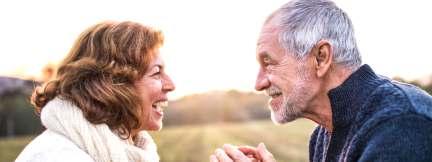
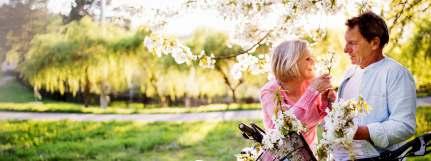

There are approximately 7,000 geriatricians practicing medicine in the United States. A report from the American Health Rankings shows there are about 28 geriatricians for every 100,000 adults over the age of 65 in Florida. The American Geriatrics Society estimates that to meet the demand, medical schools would have to train at least 6,250 additional geriatricians between now and 2030, or about 450 more a year than the current rate.
For more information call us today at (262) 287-9096 or visit us at oasissenioradvisors.com/Milwaukee to find your local Oasis advisor.
June 2023 MHL 41
ASSISTED LIVING SKILLED NURSING Live Life In Full Bloom at VMP Sprin� int� Saving� CALL NOW FOR A Experience worry-free living at VMP by scheduling your tour today! Call (414) 607-4100 for more information or visit VMPcares.com 3023 S. 84th Street | West Allis | 53227 Convenient Downtown Location Free Parking- secure Entr y System Beauty Salon-Community Room Social Activities QUALITY SUBSIDIZED SENIOR HOUSING Senior Living At Its Finest! 801 Nor th East Ave Waukesha, WI 53186 EAST TERRACE APARTMENTS of Waukesha 262-544-9757 or 800-944-4866 ext. 1122
Older Adult communities
Offer A Dynamic And Stimulating Environment

Many people delay the decision to move to a retirement community due to misconceptions or fear. They often regret not making the decision to move sooner; when they were healthier, more involved, or did not realize how lonely they were and the reasons go on and on. Regret is undesirable in all times of life; retirement decisions are no different.The many activities and daily interactions with friends and neighbors offer a dynamic and stimulating environment.
Residents freely share their thoughts about retirement living in general and the choices available to them. As you read through this article, look for the comfort, freedom and peace of mind that come from making informed choices.
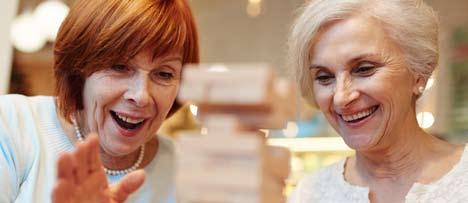
“Statistics show that retirement community residents live healthier and longer lives than those living alone.” That doesn’t sound like rocket science; we need people. A resident commented, “If I knew how many of my friends lived here, I would have moved in years ago.” As one resident says, “I have to admit, it was lonely sometimes at home, now there is always something enjoyable to do.” Whether you want to participate in all of the social activities and outings or read a good book in the quiet of your apartment, the choice is yours.
“I love telling stories and reminiscing but it’s not always easy when they’re thirty years younger than me,” remarks a resident.
A retirement community, by its very nature, allows people to interact with people their own age affording greater empathy and identification. Memories and recollections are complimented when two people can truly share the depth and breathe of events.
Somewhat tongue-in-cheek yet true, is the adage that retirement communities provide a “constant reservoir of friends.” “I never have to worry about home upkeep or shoveling again,” said a smiling resident. Now you can choose what
you would like to spend time doing: cooking in your apartment, patio gardening, traveling, learning to paint or play the piano; all of the things you never felt you had time to do before. The choice is yours.
Keeping the mind, body and spirit healthy is the goal of many retirement communities. “When I moved here, it was very impressive to see how many care about my wellbeing,” a resident reported. Your choice of personal wellness goals are supported by a retirement community’s team who are all rooting for you. “Wellness programs” are growing initiatives in retirement communities to ensure balance, increased strength and awareness of changes.
Many retirement communities provide a spiritual component through pastoral visits or Sunday services that keep your hope and faith strong through all times of life.
Retirement communities offer various forms of financial protections like “life care” or “endowments” that protect your financial future regardless of your health. A “life care” type contract also provides the potential for tax deductions for prepaid medical expenses. If you don’t feel the need for long term health care coverage, many communities offer rental programs, so again the choice is yours as to which option works best for you.
“When my wife had her stroke, it was so convenient to visit her several times a day. I couldn’t do that if I had to drive each way,” commented a resident. Should a care need arise, retirement communities can provide professional and caring services, all in the comfort of your “community.”
The choice is yours regarding your lifestyle and many elements need to be considered in making your decision. Should you decide that a retirement community is right for you, there are many elements, such as the ones listed here, that need to be considered and weighed, so that you can feel confident about your choice.
42 MHL June 2023 Retirement Senior Community
Enjoy a meal with friends. Studies show that seniors who eat together tend to have better eating habits, as sometimes the thought of eating alone can decrease appetites. Social meals should be encouraged whenever possible.
Don’t get stuck in a food rut. Don’t be afraid to incorporate some different foods or new flavors into your diet. Favorite recipes can be easily altered by adding different spices, sauces or marinades.
Schedule regular mealtimes. Humans thrive on routine, so set a regular eating schedule and stick to it. Eating at the same time each day, even having a snack at the same time, will help increase appetite.
Have a treat now and then. While you should avoid overindulging, allowing yourself a small treat every once in a while is a good way to keep your diet on track. Stick to 200-calorie treats like a piece of dark chocolate or a handful of pretzels to give yourself something to look forward to from time to time.
Older adults’ unique nutrition needs




Simple adjustments can go a long way toward building a healthier eating pattern. Follow these tips to get the most out of foods and beverages while meeting your nutrient needs and reducing the risk of disease:
Enjoy a variety of foods from each food group to help reduce the risk of developing diseases such as high blood pressure, diabetes, and heart disease. Choose foods with little to no added sugar, saturated fats, and sodium.
To get enough protein throughout the day and maintain muscle, try adding seafood, dairy, or fortified soy products along with beans, peas, and lentils to your meals. Learn more about protein and other important nutrients.
Add sliced or chopped fruits and vegetables to meals and snacks. Look for precut varieties if slicing and chopping are a challenge for you.

Try foods fortified with vitamin B12, such as some cereals, or talk to your doctor about taking a B12 supplement. Learn more about key vitamins and minerals.
Reduce sodium intake by seasoning foods with herbs and citrus such as lemon juice.
Drink plenty of water throughout the day to help stay hydrated and aid in the digestion of food and absorption of nutrients. Avoid sugary drinks.
June 2023 MHL 43
Nutrition<<page 30
Be Confident in Your Coverage.

Pilates<<page 15
your head down.
Bear Plank
Come onto hands and knees with your hands shoulder-width distance apart and your knees under your hips.

Tuck your toes under and float your knees off the ground until your abs are engaged (your knees should remain bent).
Tap your knees down and bring them back up.
Lie on your back with your knees bent with your hands behind your head and your feet flat on the floor.
As you curl up, bicycle out one leg, alternating sides each time.
Articulated Bridges + Marching Bridges
Lie on your back with your knees bent with your arms by your side and your feet flat on the floor.
Push your pelvis up into a bridge pose, making sure your ribcage is closed and your tailbone is tucked at the top.
Then add Marching Bridges: Hold your pelvis high in a bridge and lift one leg into a tabletop position, alternating sides.
Marching Ab Curls + Toe Taps
Lie on your back with your knees bent with your hands behind your head and your feet flat on the floor.
As you curl up, bicycle out one leg, alternating sides each time.
On your final ab curl, keep your head and chest held up and lift your legs into a tabletop position.
Tap 1 foot down to the floor and bring it back up, alternating sides.
Bear Planks With Full Plank Taps
Complete a set of Bear Plank.
Then come to a full plank position, tap one knee to the ground, and bring it back up, alternating sides.
Tip
To modify the plank taps, come down onto your elbows or do the knee taps in Bear Plank pose.
Articulated Bridges + Marching Bridges + Pelvic Tilts
Lie on your back with your knees bent with your arms by your side and your feet flat on the floor.
Push your pelvis up into a bridge pose, making sure your ribcage is closed and your tailbone is tucked at the top.

Then add Marching Bridges: Hold your pelvis high in a bridge and lift one leg into a tabletop position, alternating sides.
After each rep of the Articulated Bridges + Marching Bridges, add a Pelvic Tilt at the top of the bridge by lowering your pelvis 2 inches and bringing it back up using your glute muscles.
Marching Ab Curls + Toe Taps + 100’s
Lie on your back with your knees bent with your hands behind your head and your feet flat on the floor.
As you curl up, bicycle out one leg, alternating sides each time.



On your final ab curl, keep your head and chest held up and lift your legs into a tabletop position.
Tap 1 foot down to the floor and bring it back up, alternating sides.
On your final ab curl, hold and perform the 100’s: bring your knees to tabletop position and reach your arms long by your sides with your palms facing down.
Pulse your arms up and down 100 times, inhaling for a count of five and exhaling for a count of five, moving the arms up and down to your breaths.




The 7-Day Plan
Day 1
Articulated Bridges — 20 reps
Classic Ab Curls — 20 reps
Bear Plank — 20 reps
Day 2
Articulated Bridges — 30 reps
Marching Ab Curls — 20 reps (10 on each side)
Bear Planks — 30 reps
Day 3
Articulated Bridges + Marching Bridges — 20 reps (10 on each side)
Marching Ab Curls — 30 reps (15 on each side)
Bear Planks — 20 reps
Day 4
Articulated Bridges + Marching Bridges — 20 reps (10 on each side)
Marching Ab Curls + Toe Taps — 30 reps of the Ab Curls (15 on each side), followed by 20 reps of Toe Taps (10 on each side)
Pilates>>page 45

Health Insurance Life Insurance Annuities LongTerm Care Insurance Auto Homeowners Immediate SR22 Filings Free Quotes 7421 W. Becher St. West Allis, WI We are not limited to representing one company, so we can give you unbiased advice. 414-545-7878 1-800-924-4061 www.AlliedSeniorServices.com
44 MHL June 2023
Health Avenue. The diabetes testdoor and 414.220.3216 or See what’s new at St. Anne’s. St. Anne’s Salvatorian Campus 3800 N. 92nd Street, Milwaukee 53222 www.stannessc.org Take a tour of our innovative enhanced assisted living facilities or visit our renovated chapel. Call 414-463-7570. Caring for people since 1876. 140 years old and still turning heads.
Bear Planks — 20 reps


Day 5
Articulated Bridges + Marching Bridges — 20 reps (10 on each side)
Marching Ab Curls + Toe Taps — 30 reps of the Ab Curls (15 on each side), followed by 20 reps of Toe Taps (10 on each side)
Bear Planks With Full Plank Taps — 30 reps of Bear Planks, followed by 20 reps (10 on each side) of Full Plank Taps
Day 6
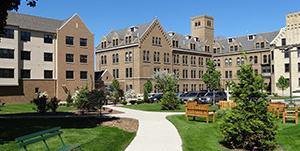

Articulated Bridges + Marching Bridges + Pelvic Tilts — 30 reps of Articulated Bridges, 20 reps of Marching Bridges, with each rep followed by a Pelvic Tilt
Marching Ab Curls + Toe Taps — 30 reps of the Ab Curls (15 on each side), followed by 20 reps of Toe Taps (10 on each side)
Bear Planks With Full Plank Taps — 30 reps of Bear Planks, followed by 20 reps of Full Plank Taps (10 on each side)
Day 7
Articulated Bridges + Marching Bridges + Pelvic Tilts — 30 reps of Articulated Bridges, 20 reps of Marching Bridges, with each rep followed by a Pelvic Tilt
Marching Ab Curls + Toe Taps — 30 reps of the Ab Curls (15 on each side), followed by 20 reps of Toe Taps (10 on each side). End with the 100’s.
Bear Planks With Full Plank Taps — 30 reps of Bear Planks, followed by 20 reps of Full Plank Taps (10 on each side)
How



to Make It Harder

To up the ante, adding in more reps or incorporate more challenging pose variations, Andersen says.
For instance, if you modified your plank taps by doing them on your knees, do them on your elbows. If you did them on your elbows, move to full plank. Instead of doing the 100’s with your legs in tabletop position, work towards straightening your legs all the way out.
Remember to Eat Right Too
A well-rounded fitness routine that includes Pilates and regular cardio exercise can improve your fitness and strength.

But to make noticeable progress with weight loss, you’ll also need to trim your calorie intake by eating smaller portions. Pick healthier, less processed foods too. “I recommend incorporating whole foods and eliminating ones that are high in processed sugars or fats,” Andersen says.
In all, you’ll need to burn 3,500 calorie in order to burn a pound of fat. If you’d like to lose a pound per week, you’ll want to eat around 500 fewer calories per day, recommend Mayo Clinic experts. You can do that by:
Enjoying treats in moderation. Have cookies or ice cream just once or twice a week rather than every day.
Snacking with purpose. It’s okay to have a healthy snack if you’re truly hungry. But try not to grab a handful of crackers or chips out of boredom.
Swaping high-cal foods for low-cal ones. Have a side salad instead of fries of chips, have a piece of fruit instead of a snack bar, or trade the cheese on your sandwich for crunchy pickles or sprouts.
Eating a little less. Use smaller plates and bowls so your portions still look generous. And try not to go back for second helpings unless you’re still truly hungry.
This piece origanally appeared on livestrong.com.
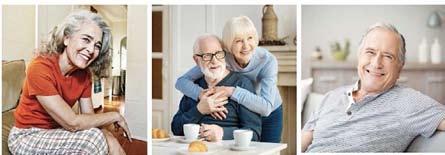

Quick facts about Pilates
Pilates is very different from yoga. Many people tend to lump the two into the same category, but they are actually quite different. Pilates is a physical fitness system, not a variation of yoga. Joe Pilates, a physicist, created Pilates with the belief that both mental and physical health are important. While elements of yoga can be found within Pilates routines, they are not the same.
Just one hour of Pilates will burn calories throughout the rest of the day. At its very center, Pilates is a form of resistance training, which has been scientifically proven to create lean muscle and boost metabolism. This means that by attending a one hour Pilates class, you will be burning off calories as you go about the rest of your day.
June 2023 MHL 4 �
Pilates<<page 44
lirium can cause agitation, aggression, or hallucinations while others may be drowsy. Patients who experience delirium tend to have longer stays in the ICU, and more than 30% of patients who develop it experience long-term cognitive impairment. They are also more likely to be transferred to nursing homes or rehabilitation facilities after they leave the hospital.
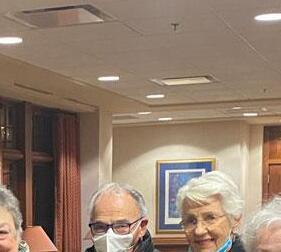

The Decreasing Delirium Through Music in Critically Ill Older Adults study, led by Babar A. Khan, M.D., at the Indiana University School of Medicine, and Linda L. Chlan, Ph.D., R.N., at Mayo Clinic, is exploring whether listening to carefully sequenced music designed as a complex cognitive stimulus while in the ICU can lead to fewer patients experiencing delirium.

Khan and Chlan have been collaborating on ICU music listening intervention for about 10 years. Earlier in his career, Khan conducted trials to test antipsychotic drugs to prevent delirium. The study results were disappointing: The drugs weren’t very effective, and any benefit was often outweighed by serious side effects.
Chlan has been investigating music listening interventions over the past 25 years. Her previous work suggested that carefully selected, preferred music with a tempo of 60 to 80 beats per minute could decrease anxiety and reduce ventilated patients’ exposure to potent sedative or opioid medications. Another study she led found that ventilated patients who listened to preferred relaxing music whenever desired and for as long as they wanted were taken off a ventilator (to breathe independently) an average of 1.4 days earlier than control groups.
While Khan doesn’t play an instrument himself, his family inspired him to look deeper into music. He loved listening to his brother play guitar and organ when they were growing up, and today enjoys listening to his daughter play violin and piano. “One of my favorite things whenever my brother was playing was to just sit down and drop everything and just listen,” Khan said.
“You take a little bit of a break and somehow it restores the thought process, or just kind of recalibrates the cognition. So, I thought, if music has a calming effect outside the ICU, why wouldn’t it have a calming effect in the ICU?”
Khan’s and Chlan’s preliminary findings suggest that playing two 60-minute doses per day of slow and relaxing combinations of piano, rainfall sounds, and classical music help reduce the burden of delirium in adult ICU patients compared to a control group who received doses of listening to audiobooks. Khan, Chlan, and colleagues are now working to expand their research in this area.
Khan says he’s been pleasantly surprised by music’s impact. “Believe it or not, before I started doing research and before meeting Dr. Chlan, I never thought that music could be a potential therapy,” Khan said. Now, he sees a possible future


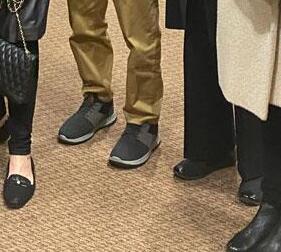
where music could be instrumental in reducing delirium and easing anxiety and stress for families, nurses, and caregivers.
Soothing sleep with music in people living with dementia
People living with Alzheimer’s or a related dementia often experience sleep disturbances, such as insomnia or waking up during the night. These sleep problems can also disrupt their caregivers’ sleep, contributing to poorer physical and mental health in people who may already feel overwhelmed. For those living with dementia, sleep disruption has been associated with more time in health care facilities, poorer cognitive function, and faster disease progression.
Darina Petrovsky, Ph.D., R.N., of Rutgers University, is testing whether music can be an effective intervention to help ease these problems. A serious musician since age 7, Petrovsky studied piano performance as an undergraduate and later completed master’s and doctoral training in nursing.





As part of her study, Petrovsky and her team are developing and testing a mobile app called Calming Music Personalized for Sleep Enhancement in PeRsons living with Dementia (CoMPoSER). CoMPoSER helps caregivers tailor music to play before bedtime with the goal of a more restful night for all. CoMPoSER’s recipe for good sleeping music includes enjoyable songs from a person’s adolescence or early adulthood with a tempo of between 60 and 80 beats per minute, a pace similar to the average human heartbeat. “If you’re listening to something with fewer beats per minute, your heartbeat, your brain activity, and your breathing rate will gradually match those musical characteristics and bring your arousal state down,” she said. Previous research has suggested that music without lyrics might be more conducive to sleep, and that songs with high pitched tones or faster, driving rhythms could be counterproductive to the rest and relaxation needed for sleep. Petrovsky is still not sure why instrumental music works better than songs with lyrics but suspects our curious brains are to blame. “Perhaps lyrics make the person think more about the meaning of a song as opposed to the emotion or the mood that the music is evoking.”
Petrovsky’s team is currently prototyping and testing CoMPoSER in a small group of participants, with the goal of scaling up to a larger clinical trial by mid2024. As the project expands, she is excited to explore if customized music could someday be an easily accessible, inexpensive tool that might help caregivers and people living with dementia get more and higher-quality sleep.
Testing music to reduce agitation and aggression






Other investigators are testing whether music can ease daytime dementia-related issues such as agitation, anxiety, and aggression, all of which can be troubling for people with dementia and their caregivers.

262-478-1500 TEROVASENIORLIVING COM ORLIVING 262-478-1500 TEROVASENIORLIVING COM ORLIVING 46 MHL June 2023
Music<<page 33
Daniel Paskowitz, MD, PhD. Of the 1,000+ hip fractures that occur each day, many are due to visual impairment from cataracts.


4. “Medicare covers 80% of the allowable cost of cataract surgery and insurance covers a majority (or sometimes all) of the remainder,” notes “Our team uses the latest technology, so the operation takes only 10-15 minutes. Afterward, patients go home and resume most all normal activities within hours, and vision noticeably improves within days,” says Michael Raciti, MD.
5. Cataract removal with lens implantation began in 1949 and is the most commonly performed surgical procedure for Americans age 65+. “The overwhelming majority of patients improve their vision—often to levels not seen in years,” says David Scheidt, OD, who handles pre- and post-operative surgery care.


Free Information
Eye Care Specialists’ doctors are dedicated to providing the highest quality cataract, diabetic, glaucoma, and macular degeneration care. They frequently lecture to the public and fellow physicians and have written their own series of booklets on these conditions. Call 414-321-7035 for FREE copies. If it’s time for an eye exam or you would like a second opinion (which is typically covered by Medicare and/or insurance), Eye Care Specialists has offices on 7th & Wisconsin Ave., Mayfair Road across from the mall, or 102nd & National Ave. They also offer extensive information at www.eyecarespecialists.net.
Sign up for Mutt Mail, a monthly e-newsletter with backyarding tips and all the news from the TurfMutt Foundation. To learn more about creating the yard of your dreams, visit TurfMutt.com.

About TurfMutt
TurfMutt was created by the Outdoor Power Equipment Institute’s (OPEI) TurfMutt Foundation and has reached more than 70 million children, educators and families since 2009. Through classroom materials developed with Scholastic, TurfMutt teaches students and teachers how to “save the planet, one yard at a time.” TurfMutt is an official USGBC® Education Partner and part of their global LEARNING LAB. TurfMutt is an education resource at the U.S. Department of Education’s Green Ribbon Schools, the U.S. Department of Energy, the U.S. Environmental Protection Agency, Green Apple, the Center for Green Schools, the Outdoors Alliance for Kids, the National Energy Education Development (NEED) project, Climate Change Live, Petfinder and the U.S. Fish and Wildlife Service. In 2017, the TurfMutt animated video series won the coveted Cynopsis Kids Imagination Award for Best Interstitial Series. TurfMutt’s personal, home habitat is featured in the 2017-2020 Wildlife Habitat Council calendars. More information at www.TurfMutt.com.
Morning<<page 22


which is why I take them in supplement form since these varieties are hard to find in most grocery store aisles.
Stay Consistent
Establishing a consistent, daily morning routine can help your body adjust and conserve energy before you officially “clock in” to life. Once you get enough sleep, circulation, focus, movement and nutrition, plan activities at the times of the day when you feel most energized, and schedule rest periods to recharge. Having a structured routine can provide a sense of stability and reduce fatigue, making it easier to manage your energy levels.
With consistency, patience, and self-care, you can regain control and effectively manage fatigue associated with immune-compromising illnesses.


Biography:




































Danielle Pashko is an author, holistic nutrition expert, certified health coach and former yoga instructor. She earned her bachelor of science degree in holistic nutrition from The College of Natural Health and was certified as a health coach from the Institute of Integrative Nutrition. Pashko develops weight loss and detoxification programs, as well as customized nutraceutical products, for prestigious doctors throughout New York City. She also provides nutrition consulting for healthy menu development at established restaurants and children’s schools. Her expertise in nutrition and wellness has been quoted in major media publications including: the New York Post, FOX News and USA Today. Pashko is the author of “Breaking Your Fat Girl Habits” and “Smile at Your Challenges.” She has taught and worked with clients at The Sports Club/LA, Reebok Sports Club/NY, Equinox Fitness, Exhale Spa and The Peninsula Spa and is currently working with world-renowned health expert, Oz Garcia at his Upper West Side clinic in New York City.
Oak Park Place offers Assisted Living and Memory Care with all the features you expect in a place to call home. Individualized services, life-enhancing amenities, and compassionate, professional staff are the foundation of all we do.

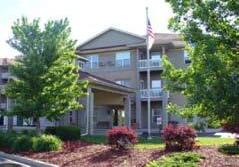

Choose from a range of spacious studio and one-bedroom apartments with assistance available from staff 24 hours a day, every day.
Independence when you want it, assistance when you need it. Oak Park Place.

We’ll help you every step of the way.

1621 Rivers Bend, Wauwatosa, WI 53226 www.OakParkPlace.com/Wauwatosa
how will you spend it?
414-292-0400 or email wauwatosasales@oakparkplace.com. June 2023 MHL 4� BRENWOOD PARK 9501 W. Loomis Rd. | Franklin WI 53132
and hot water is included in your r ent, along with many fun and unique acti vities, On-site management of fice and 24/7 maintenance. Call Us To Schedule A Tour ASAP! 414-427-8499 Brenwood Park Senior Living Vision<<page 9
Call
Heat
Yard<<page 12














 Media Group Amanda Lewis Malberry Media Tom Delgado Barry Lewis
Media Group Amanda Lewis Malberry Media Tom Delgado Barry Lewis





 Lewis
Lewis
















 By Elizabeth M. Ward, M.S., R.D. For Environmental Nutrition
By Elizabeth M. Ward, M.S., R.D. For Environmental Nutrition
























































































































































